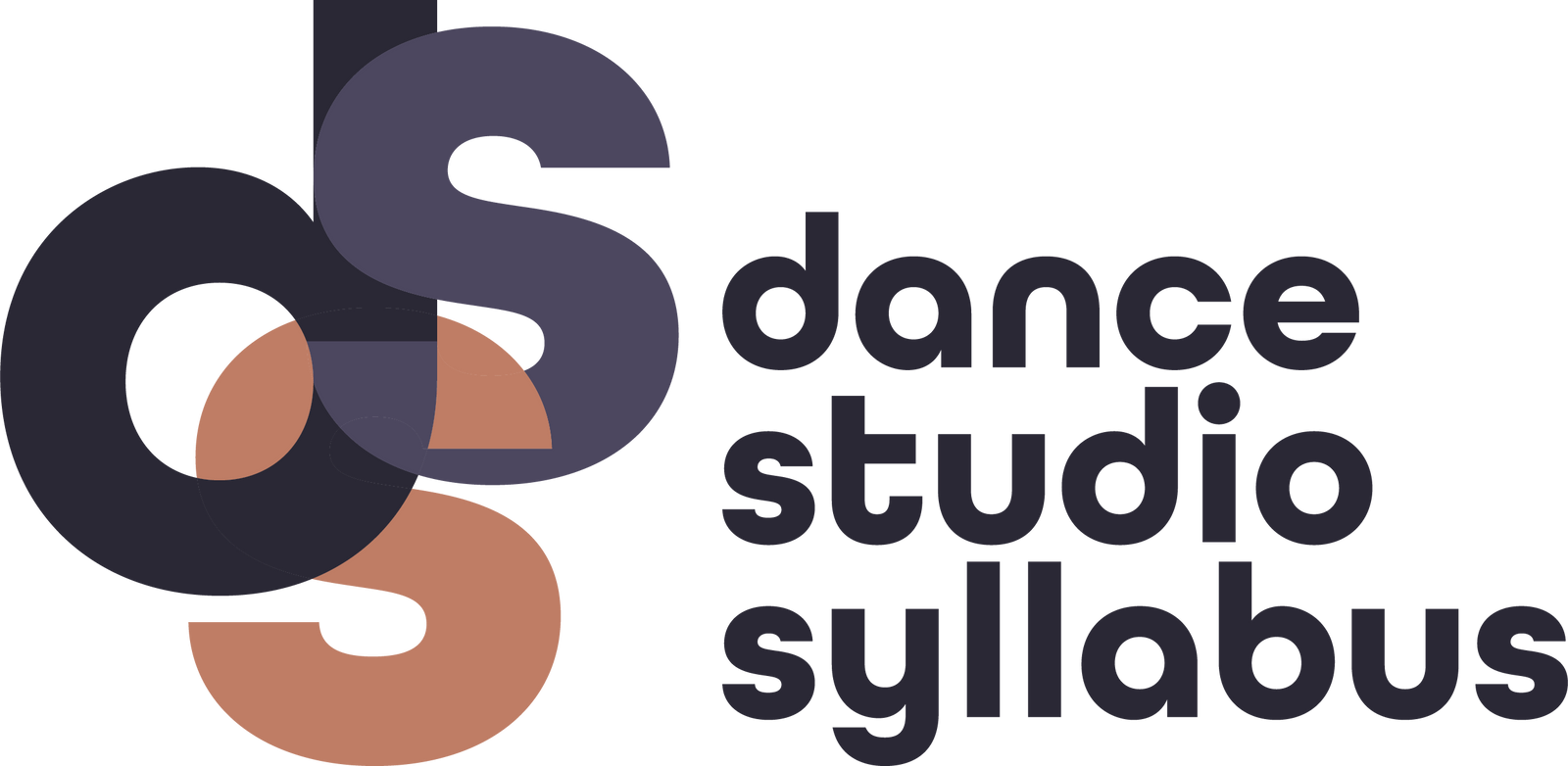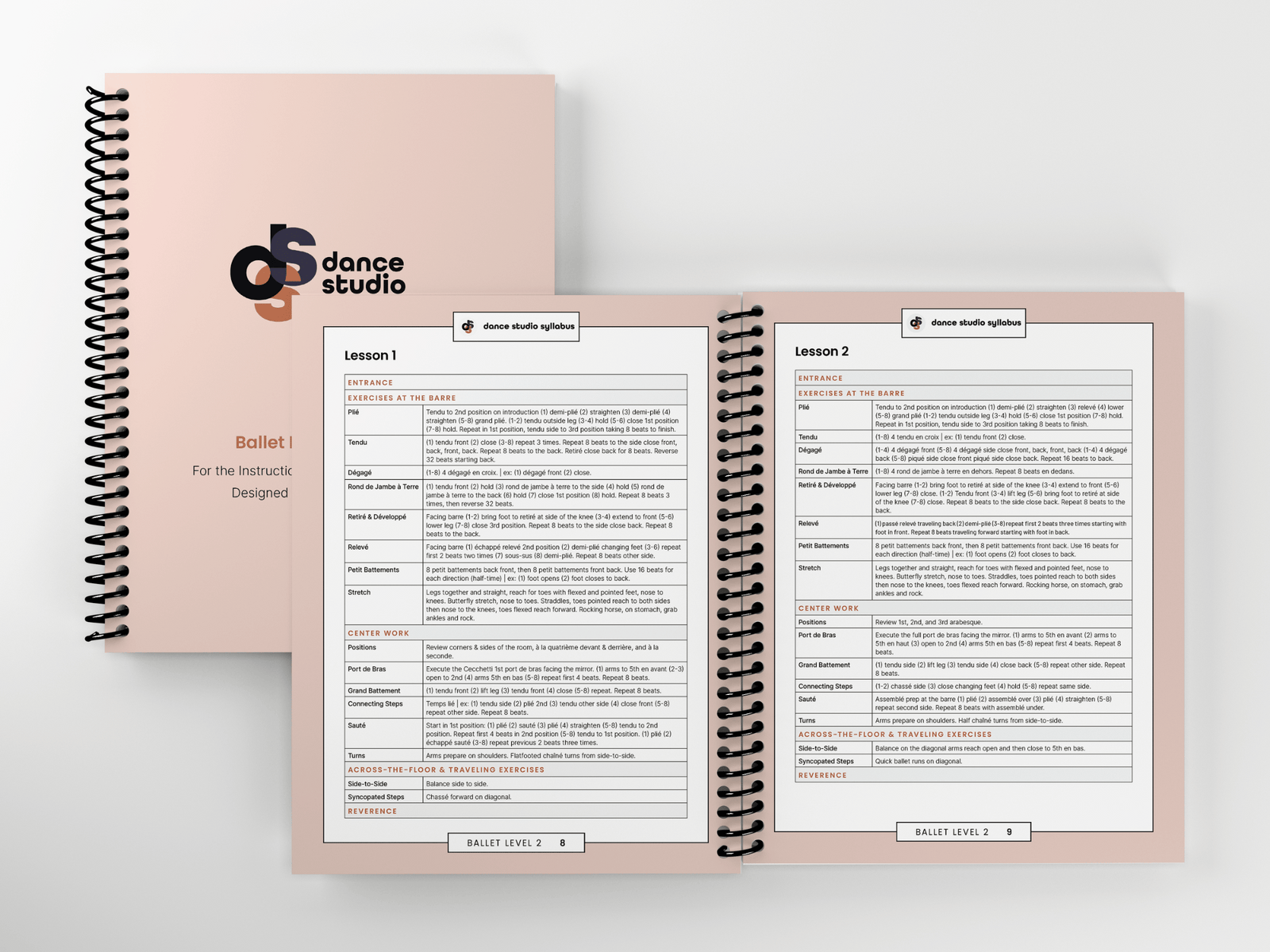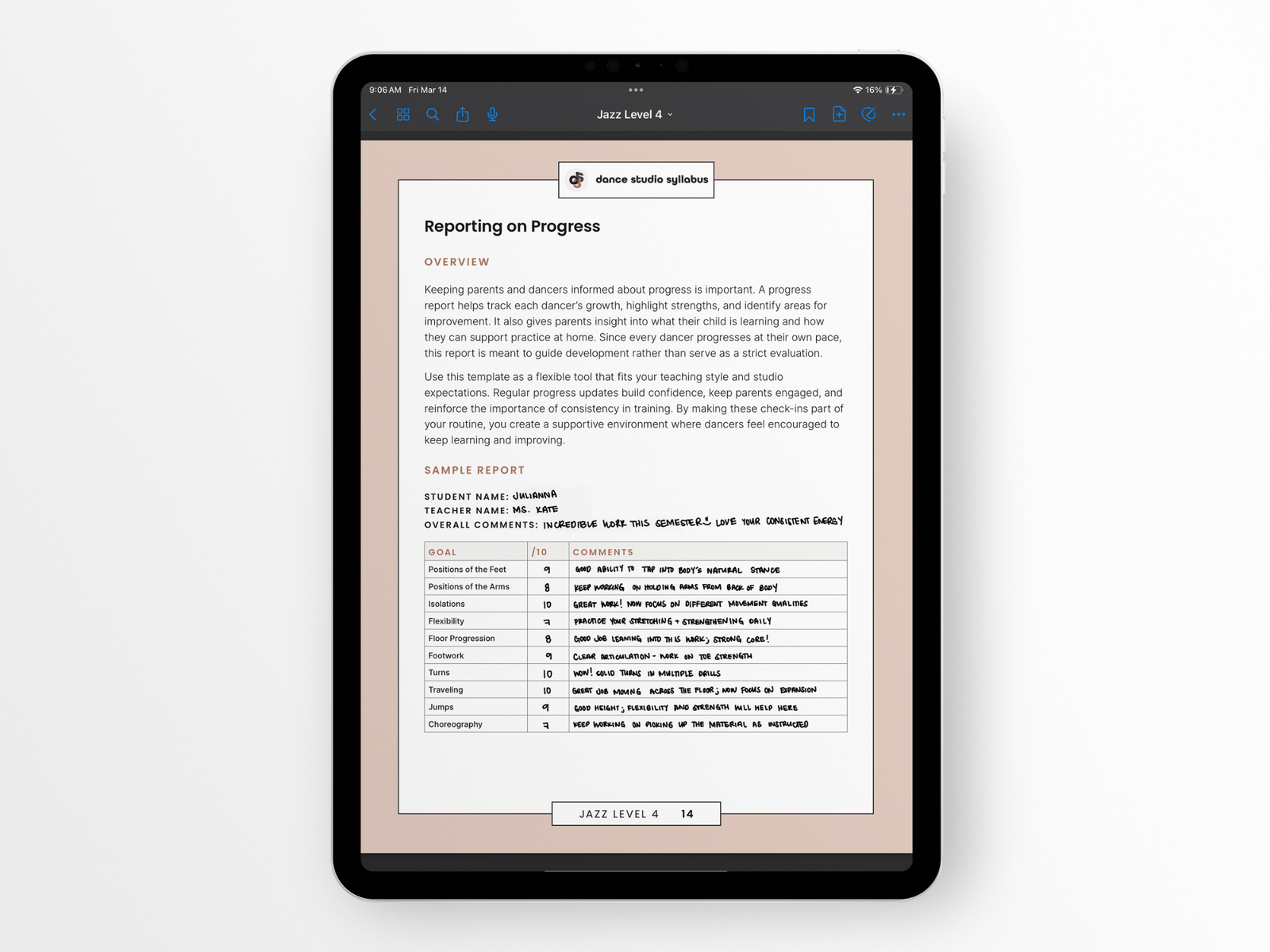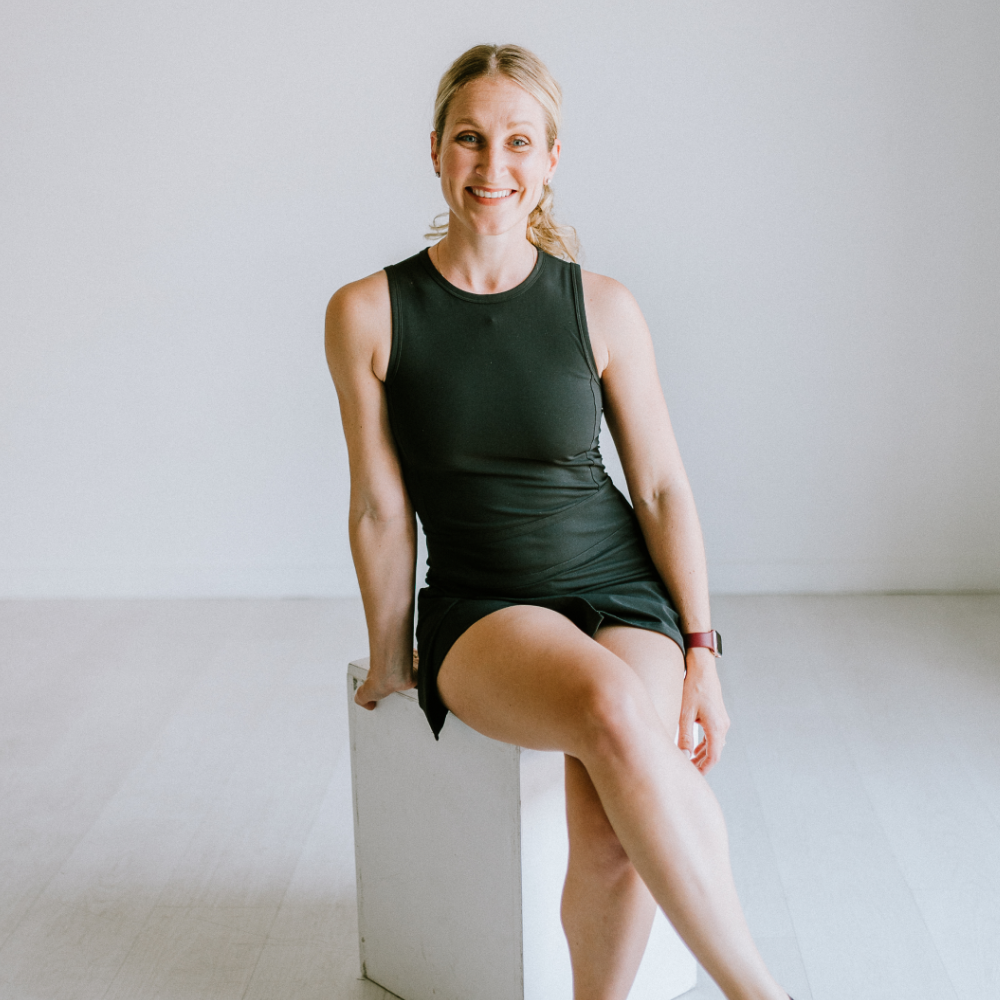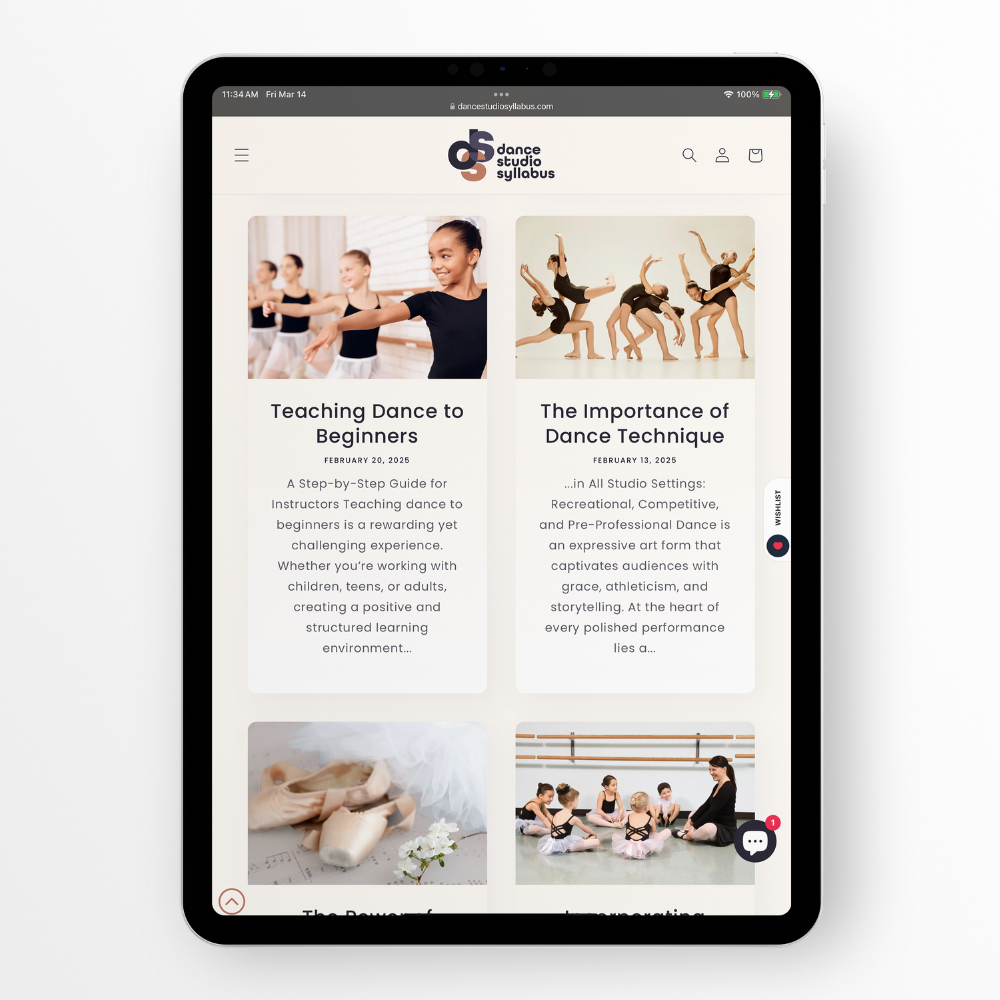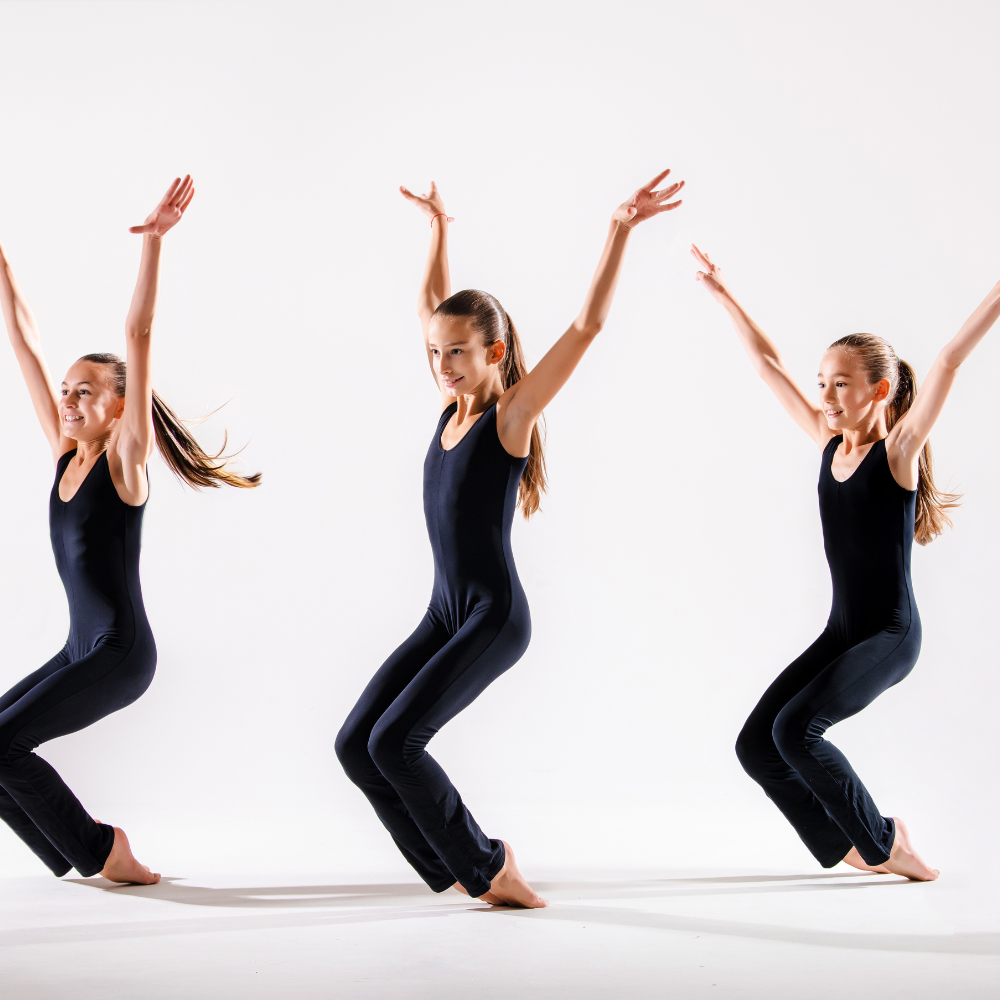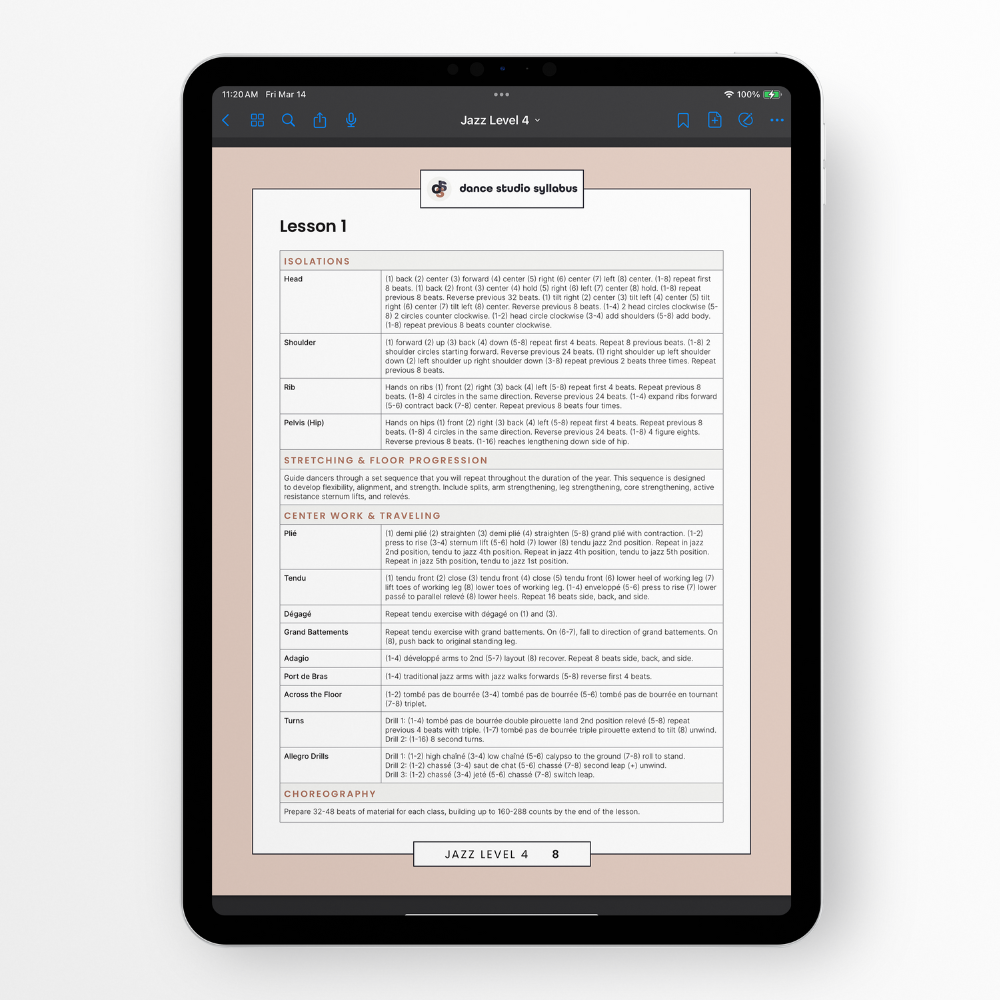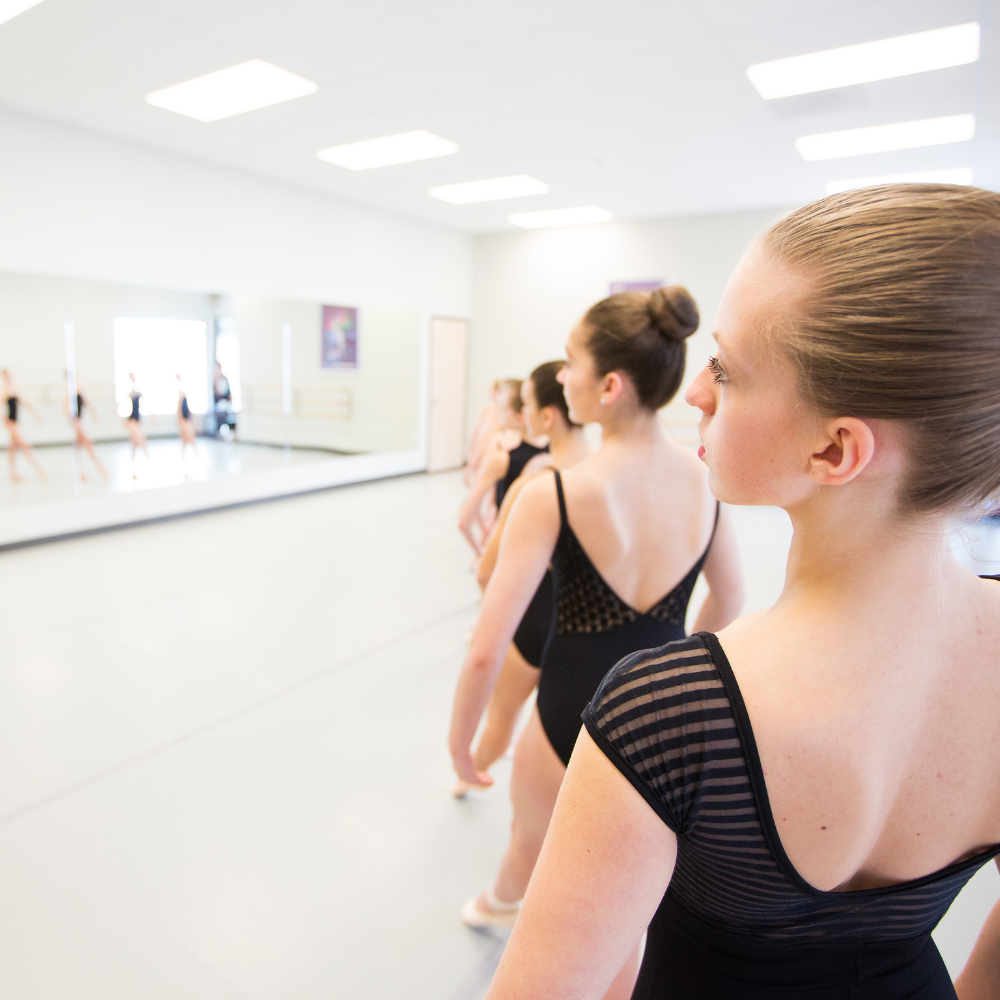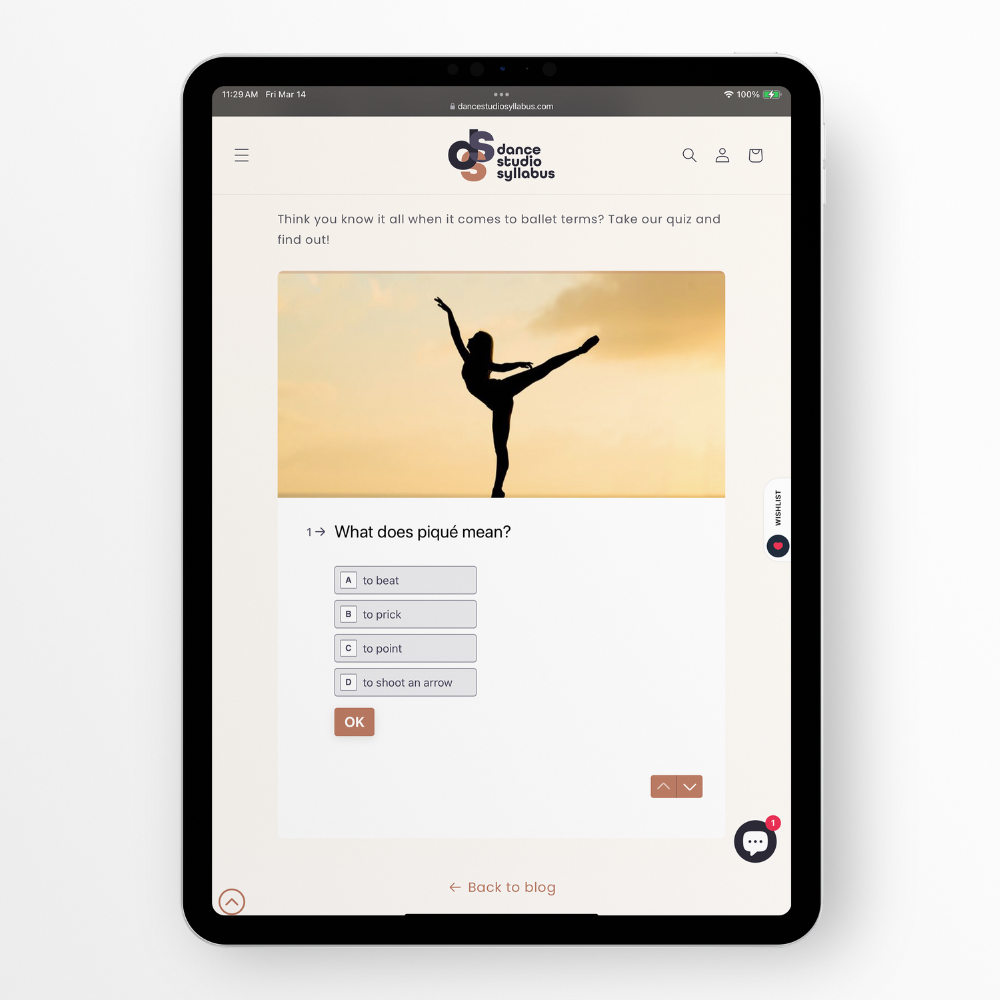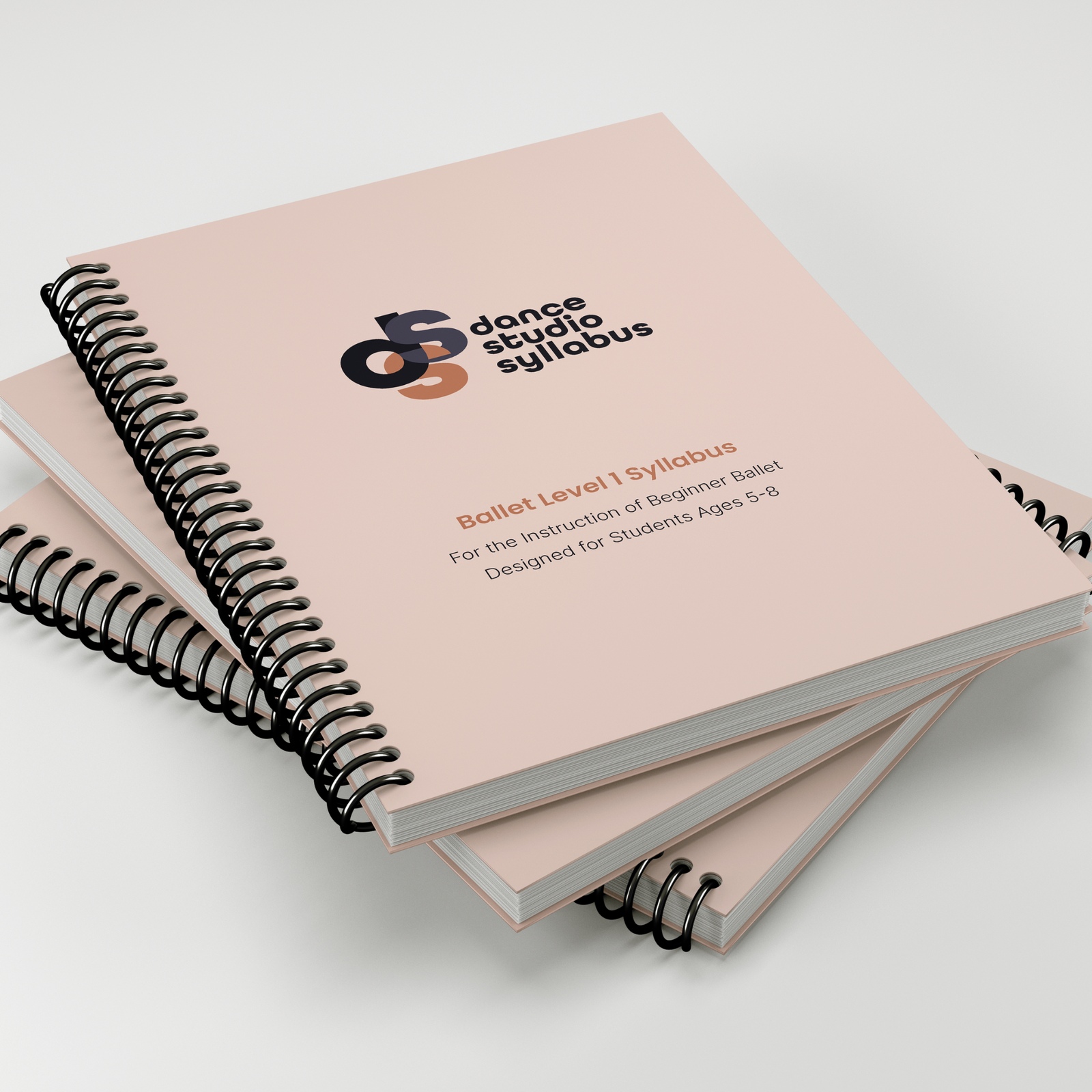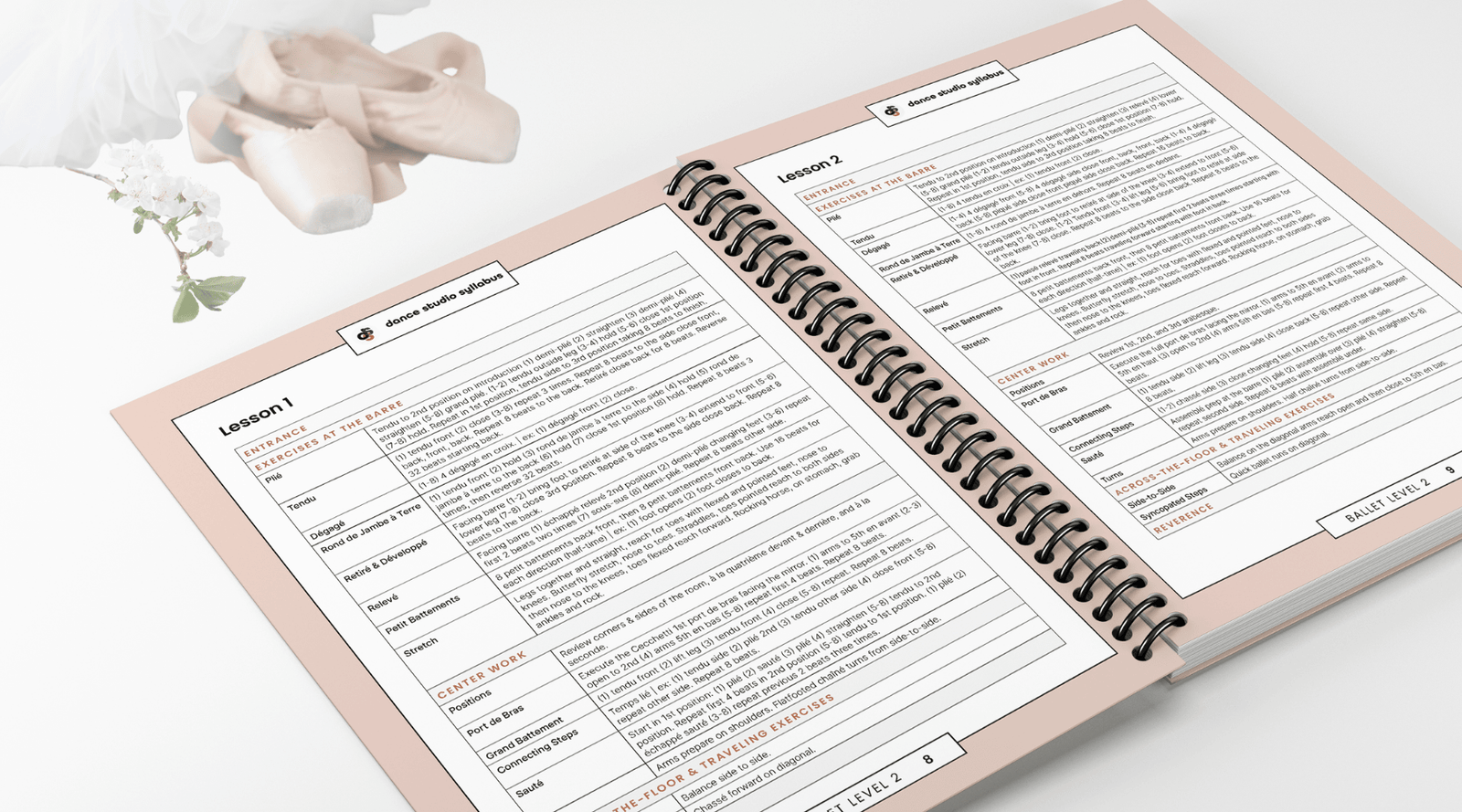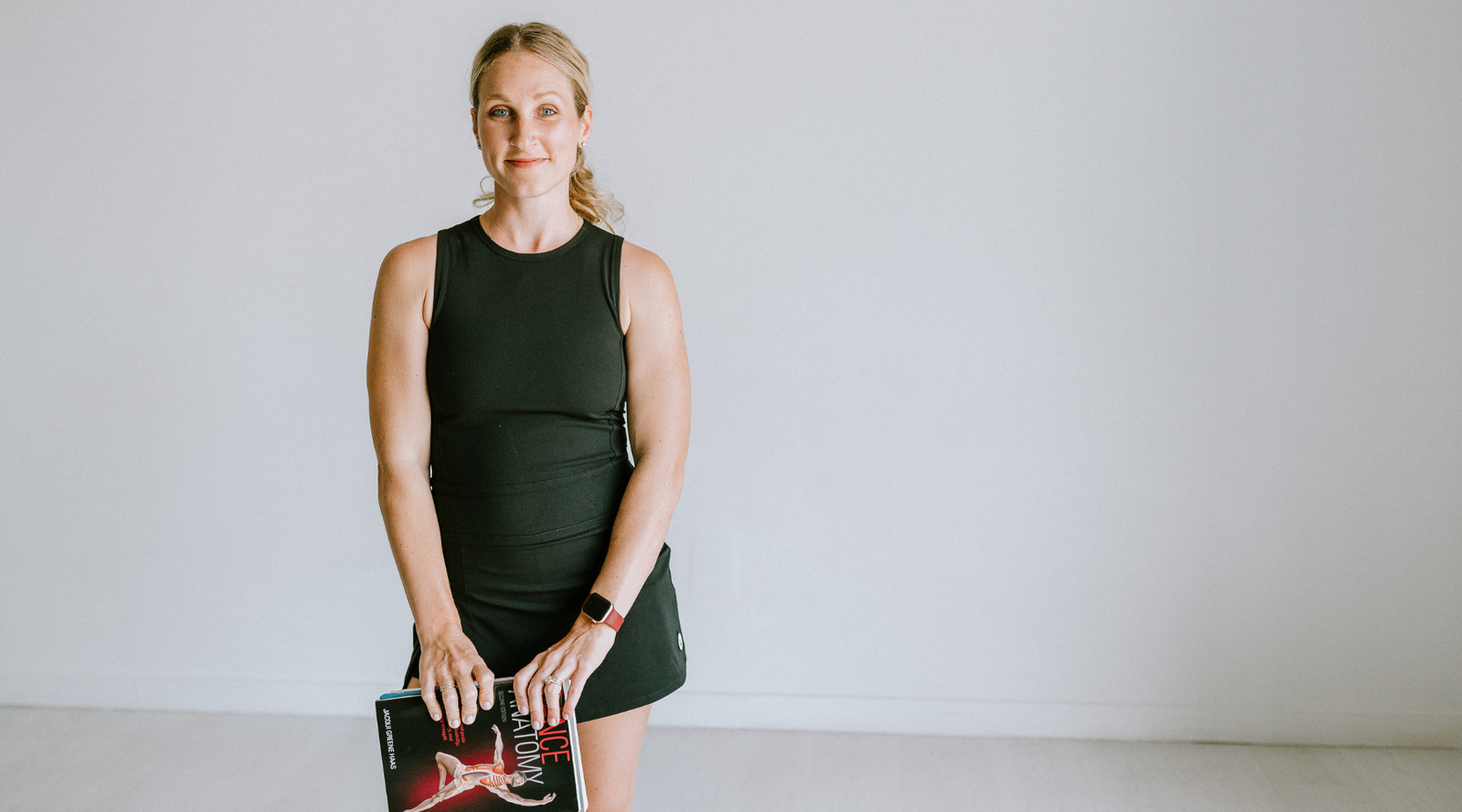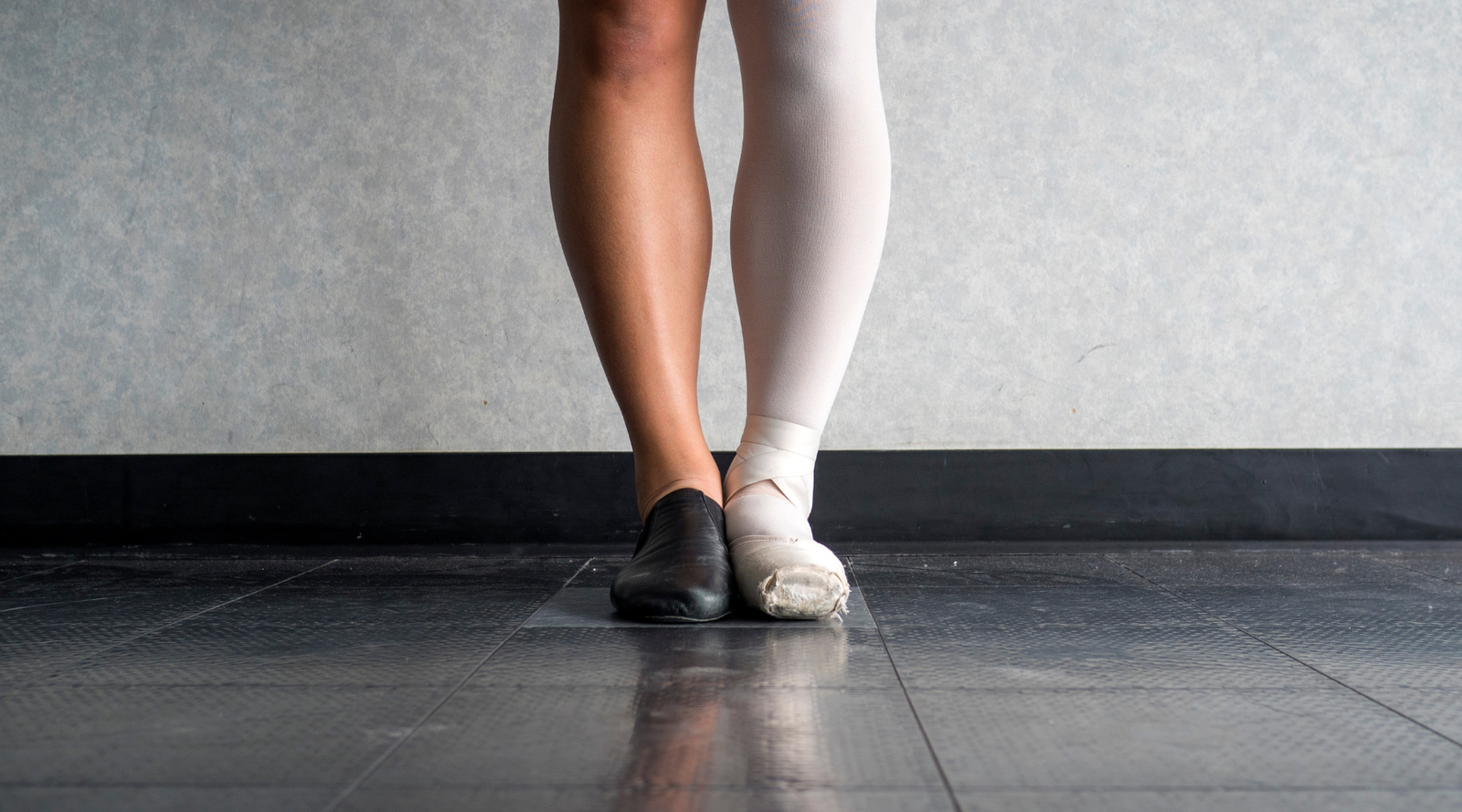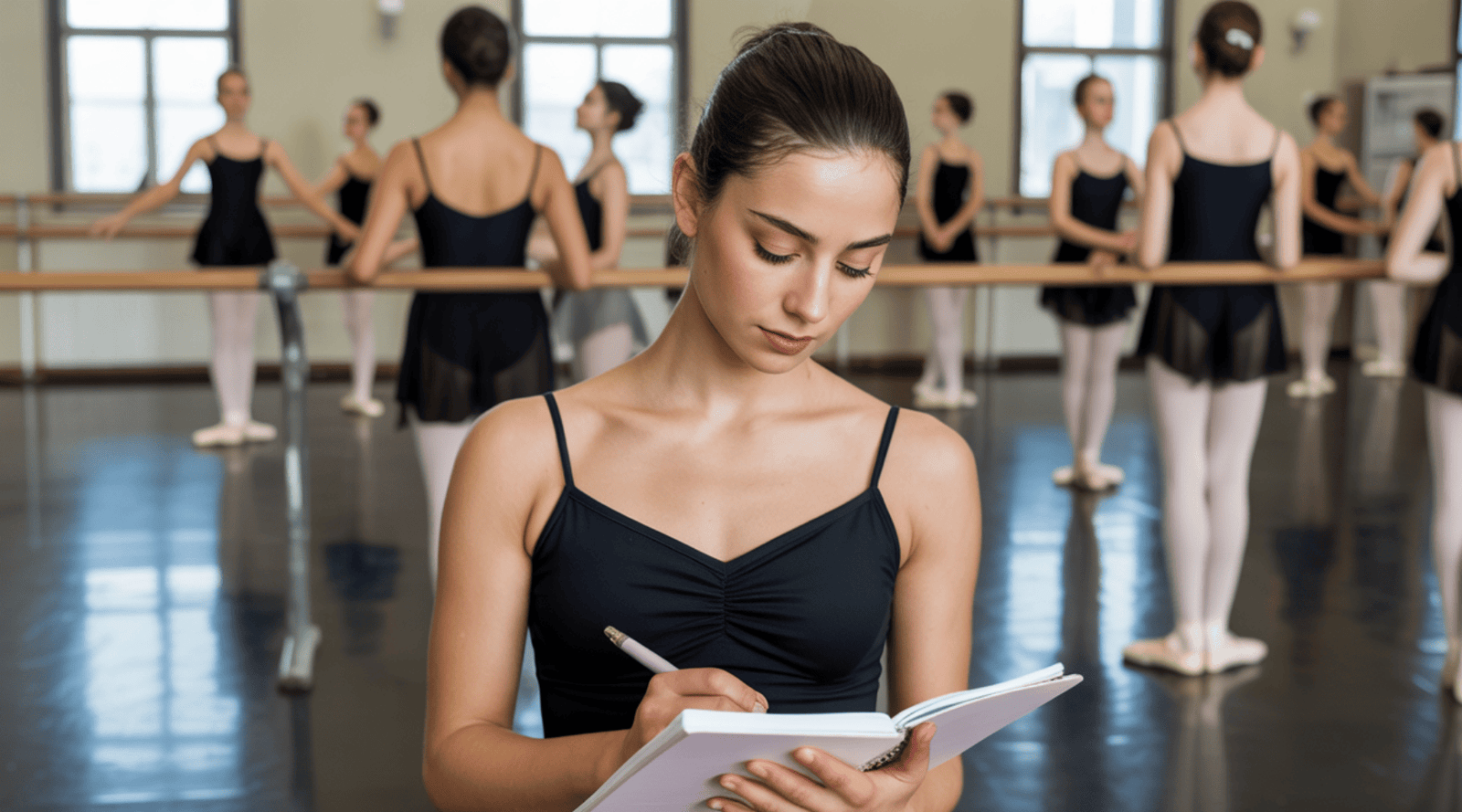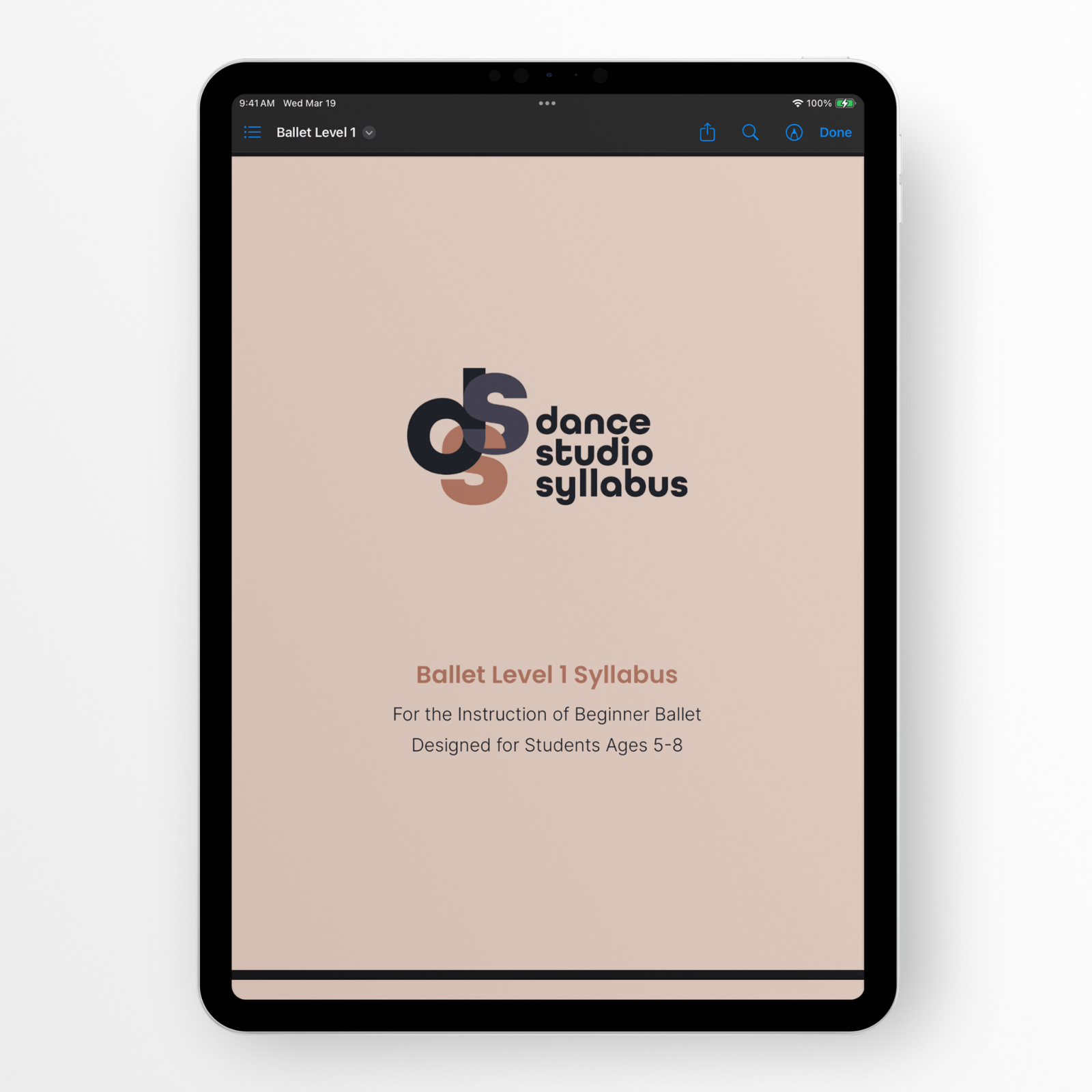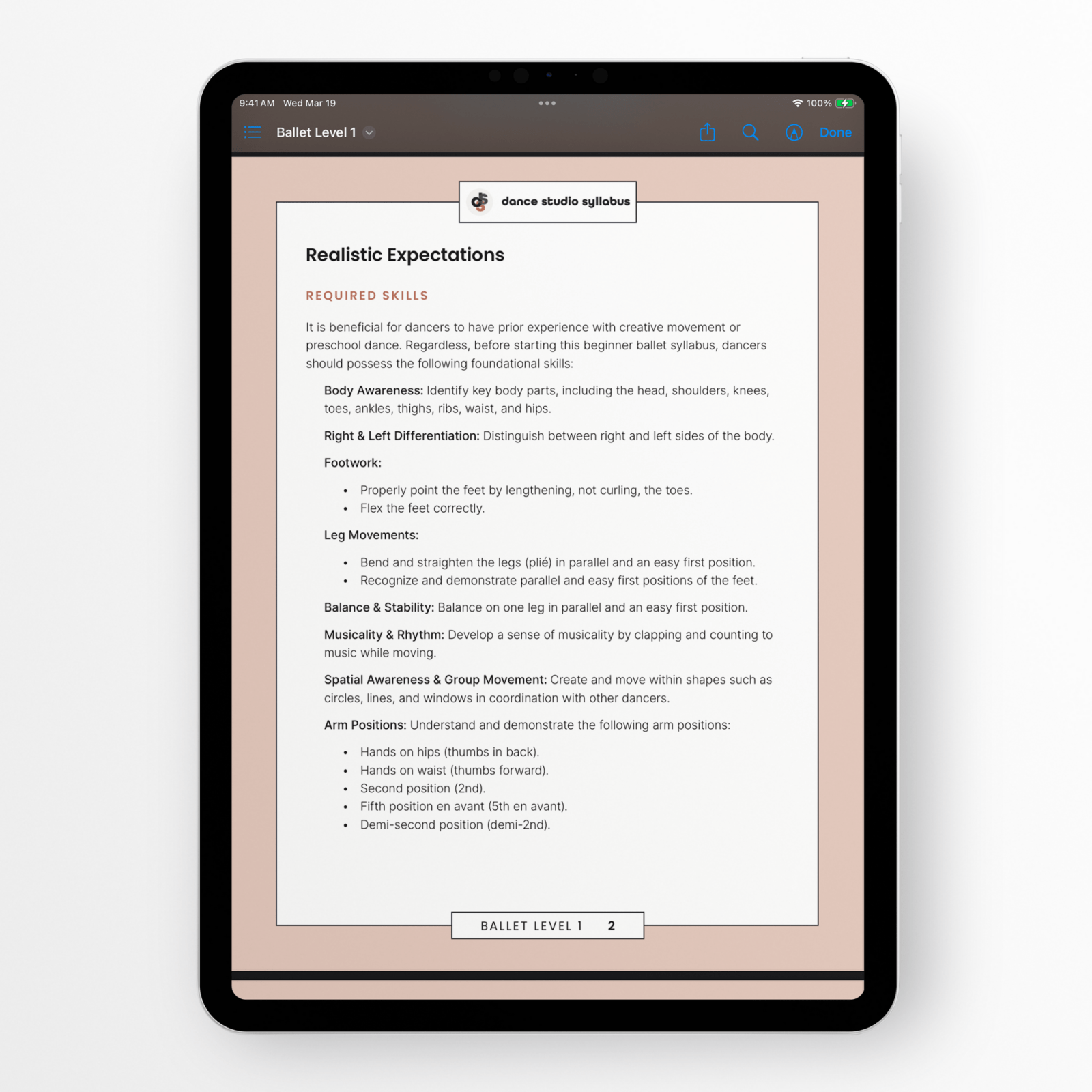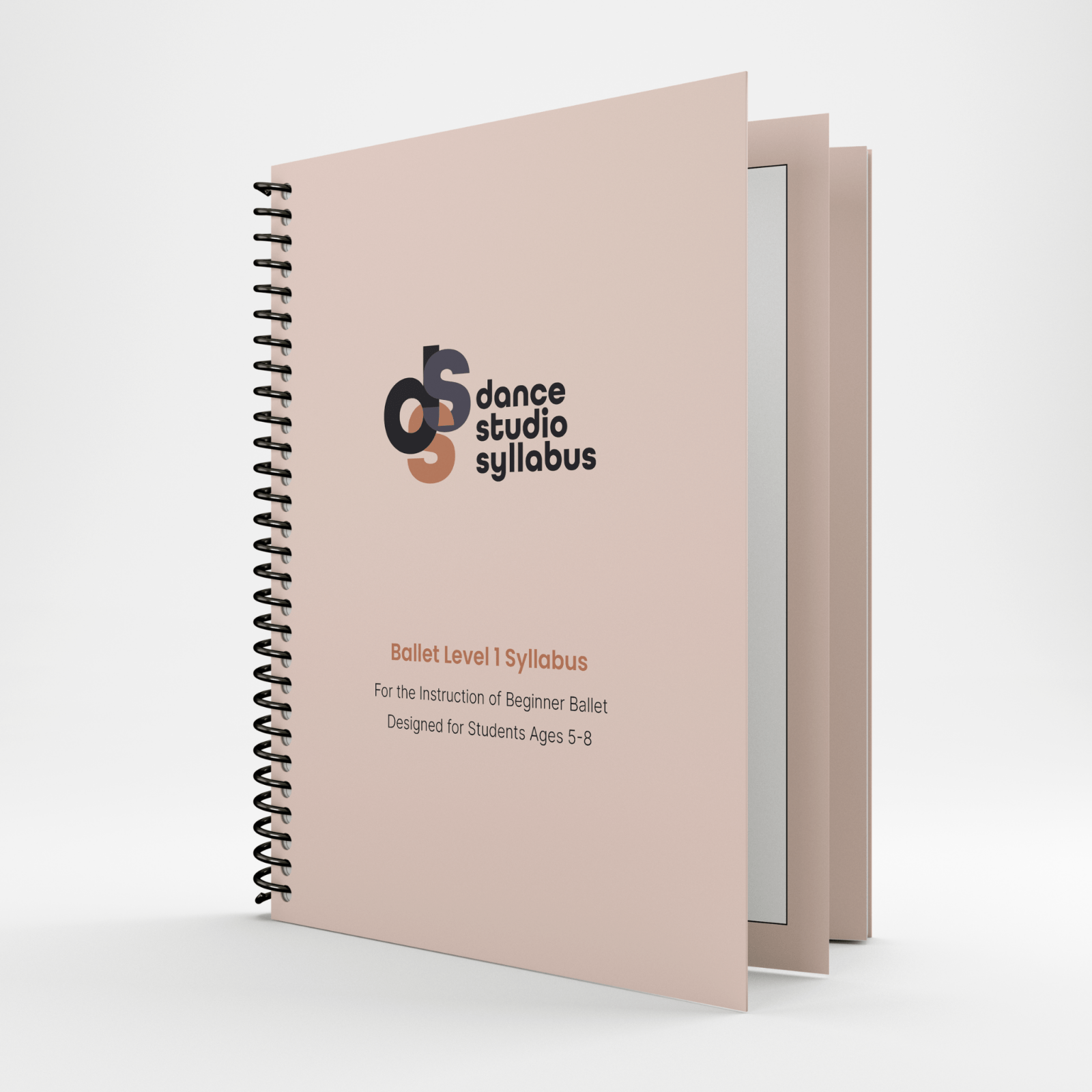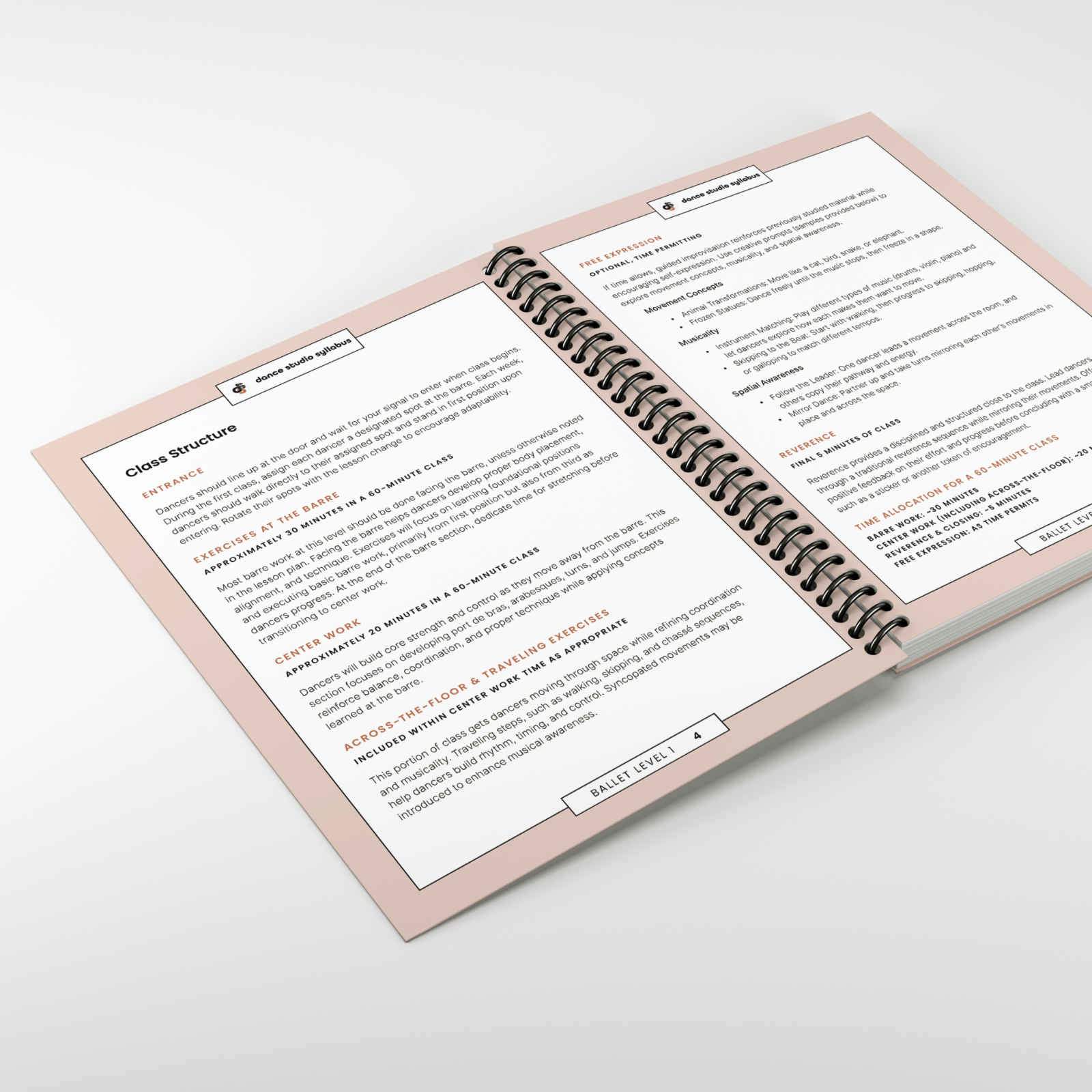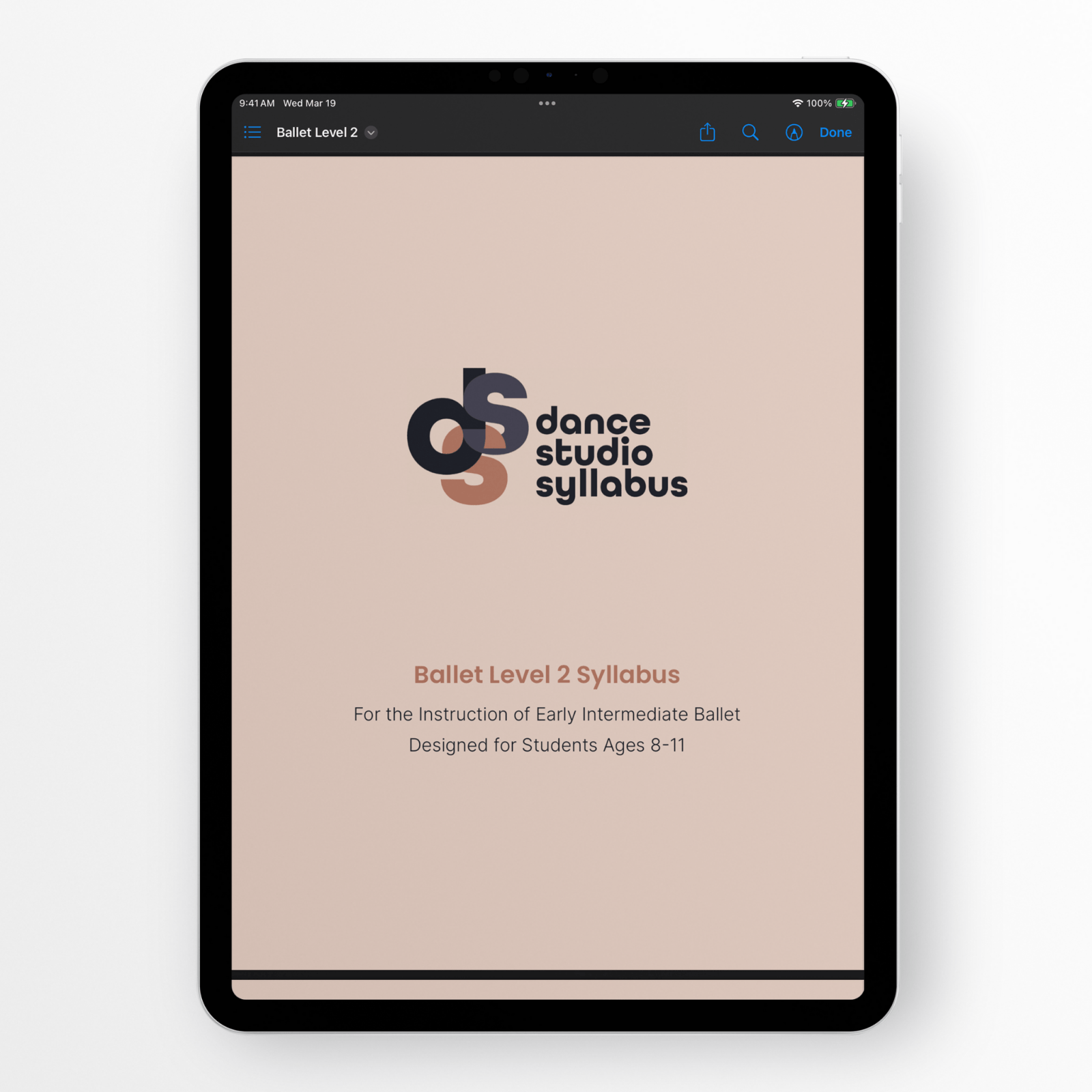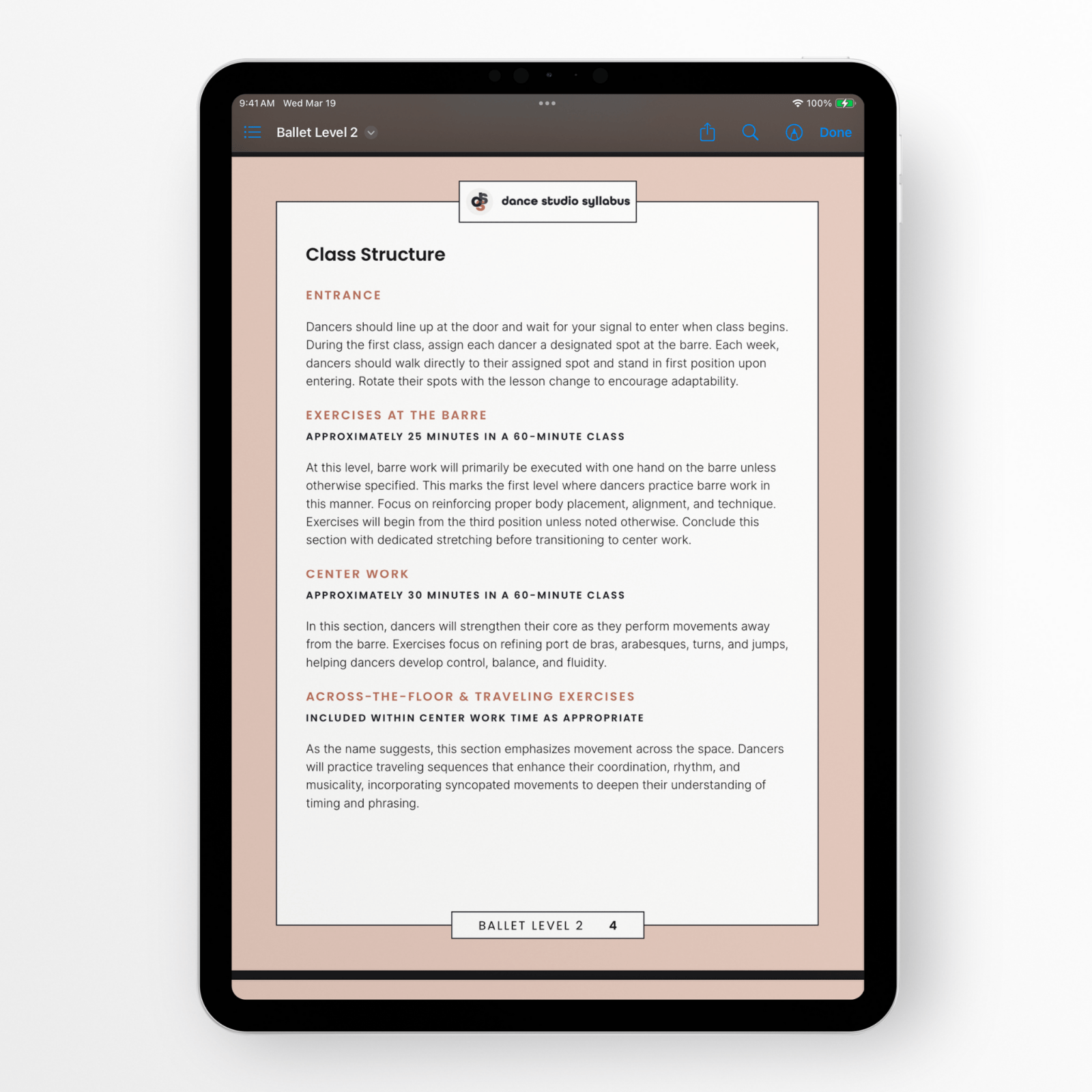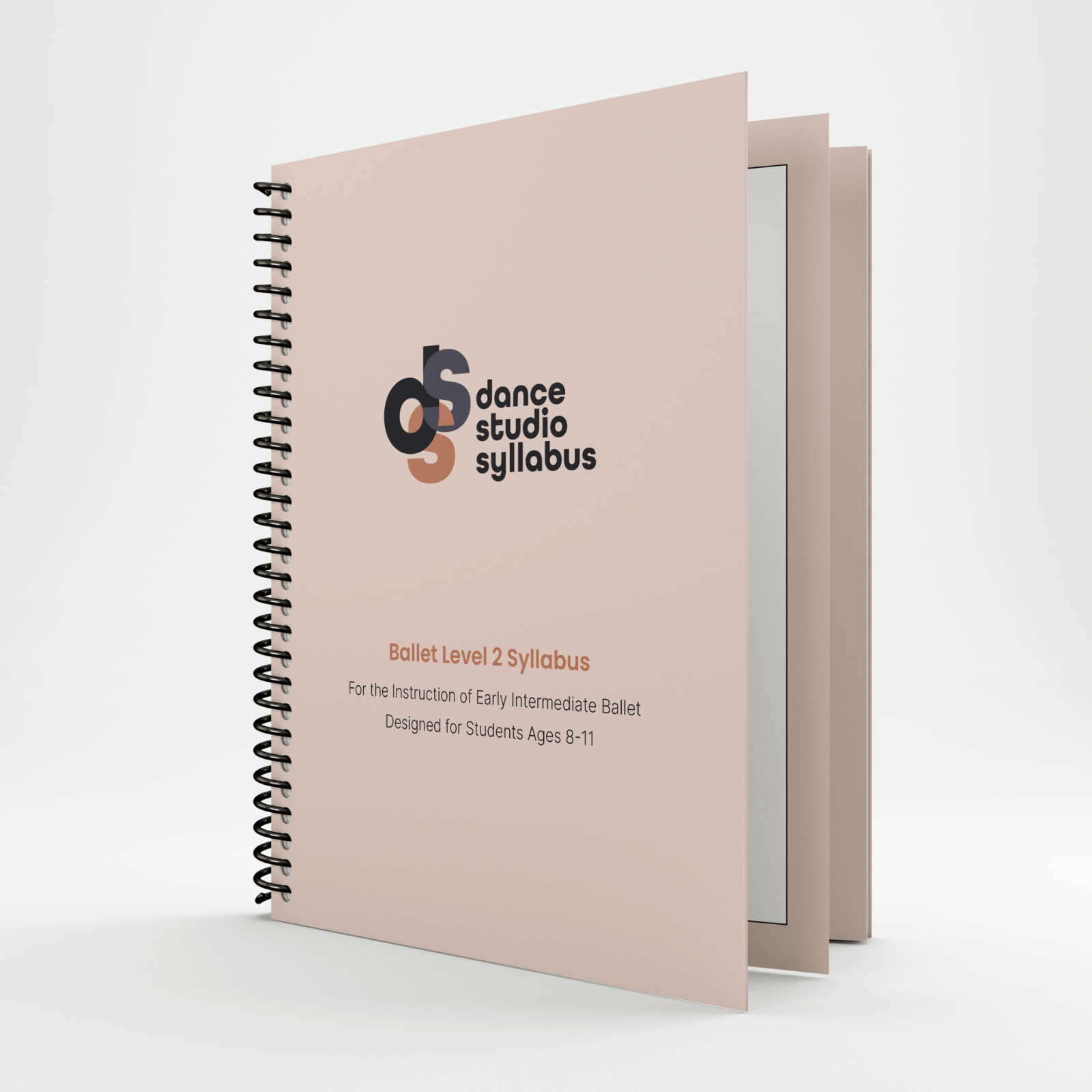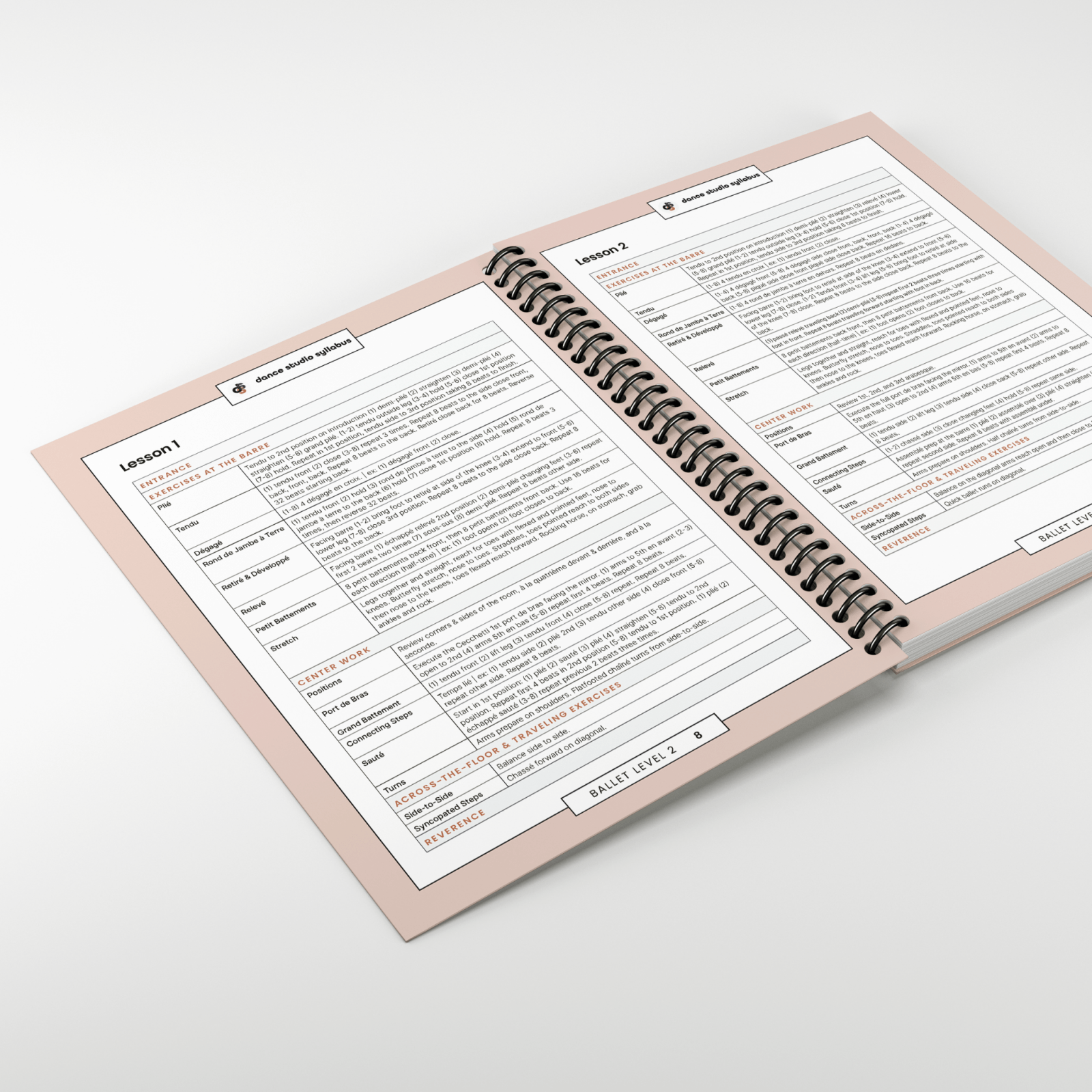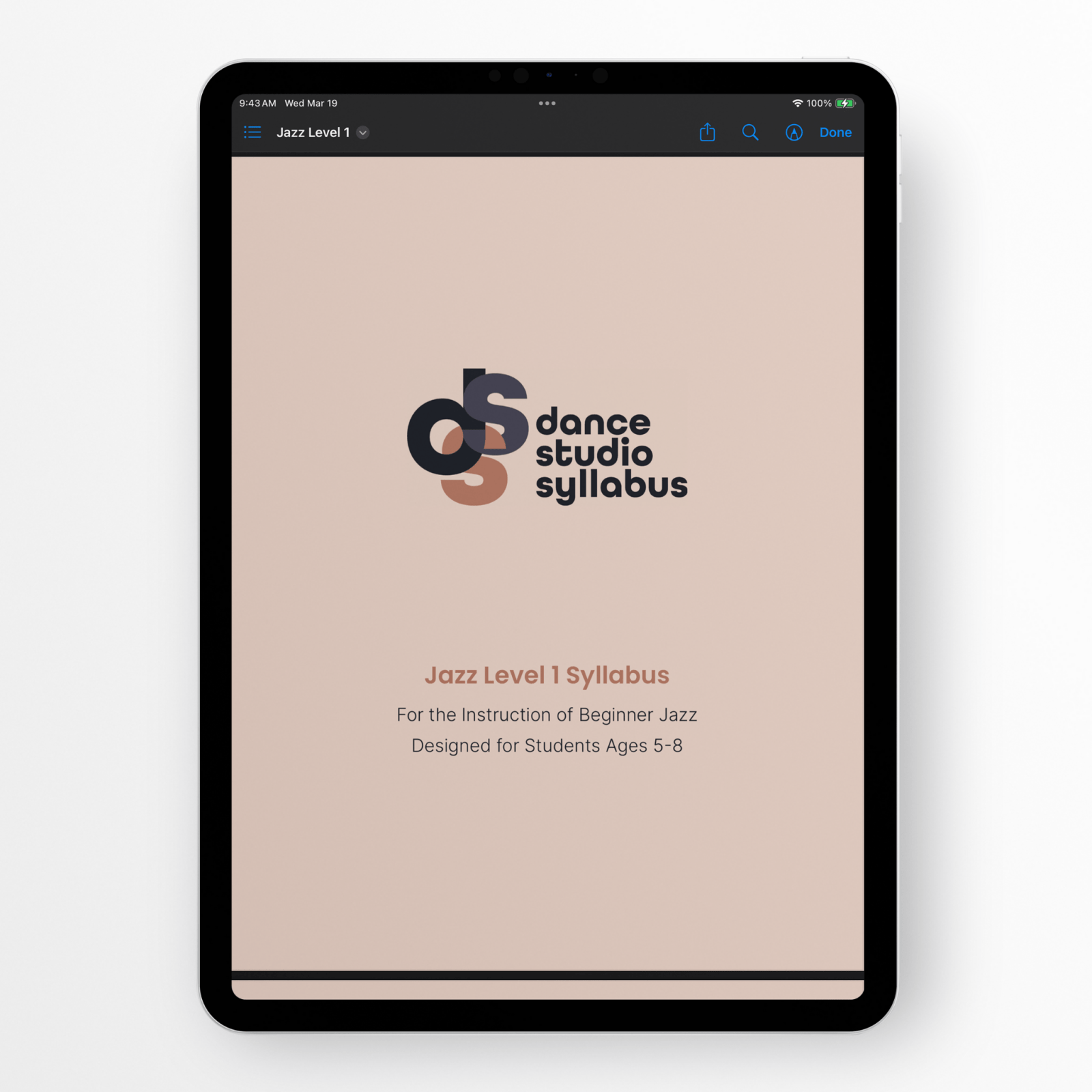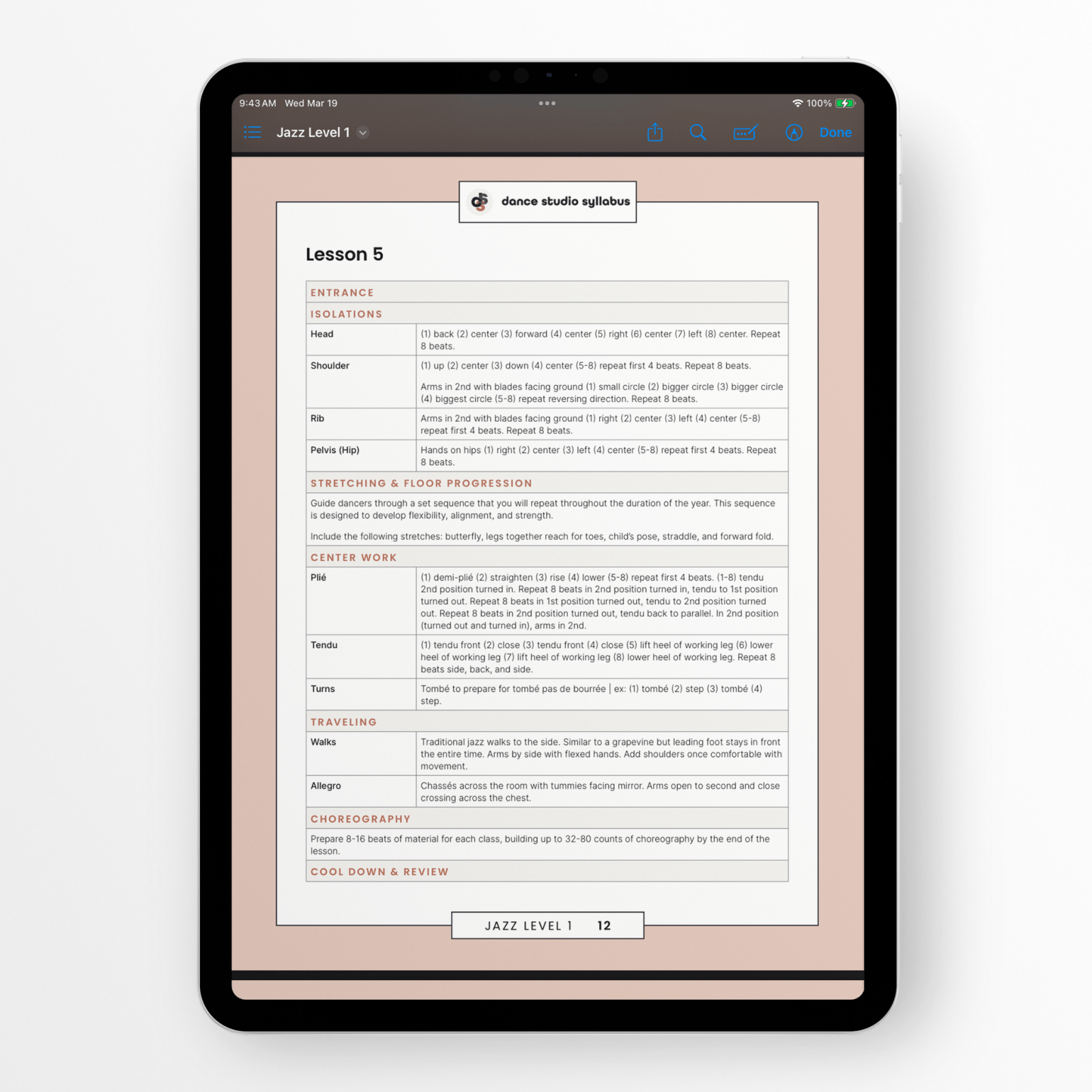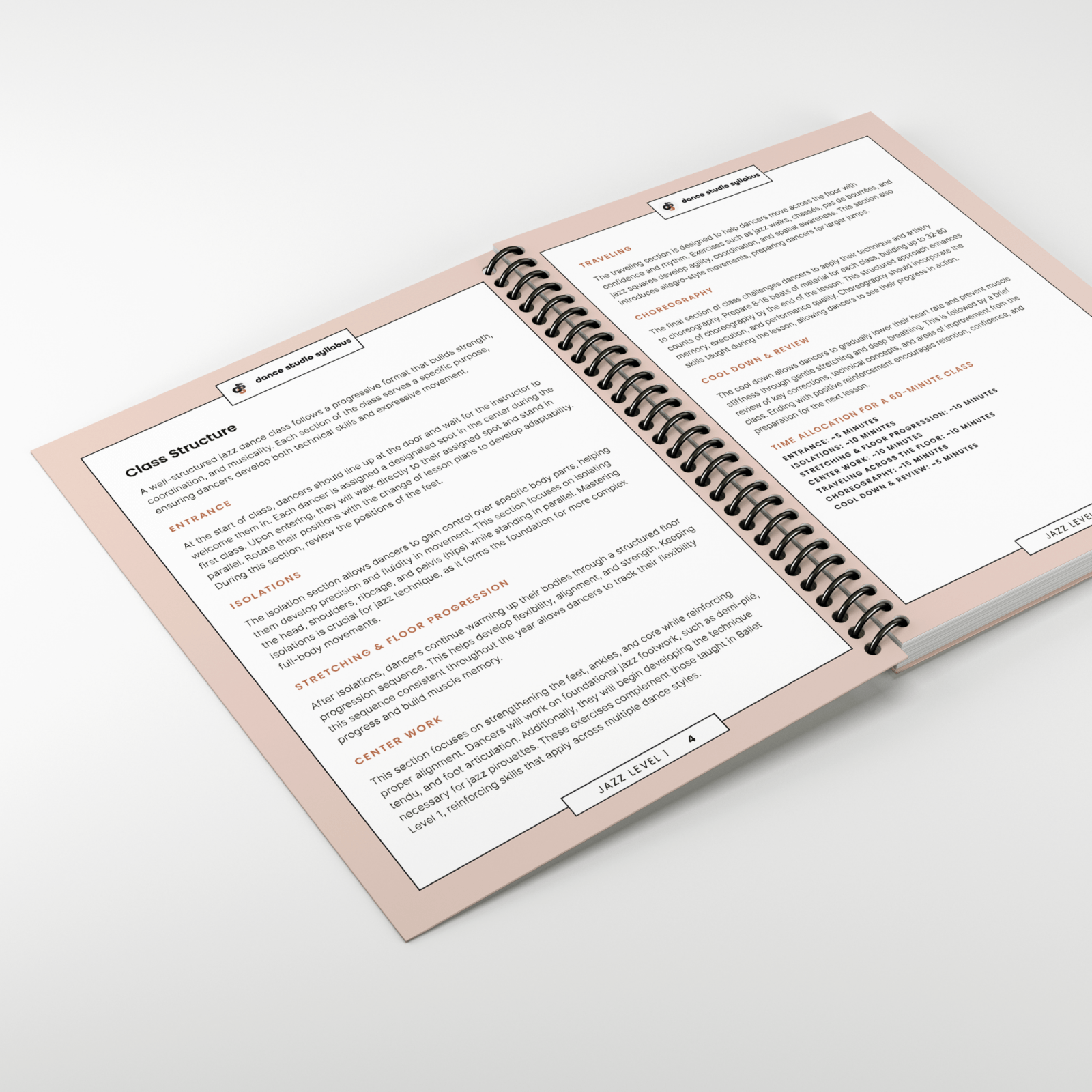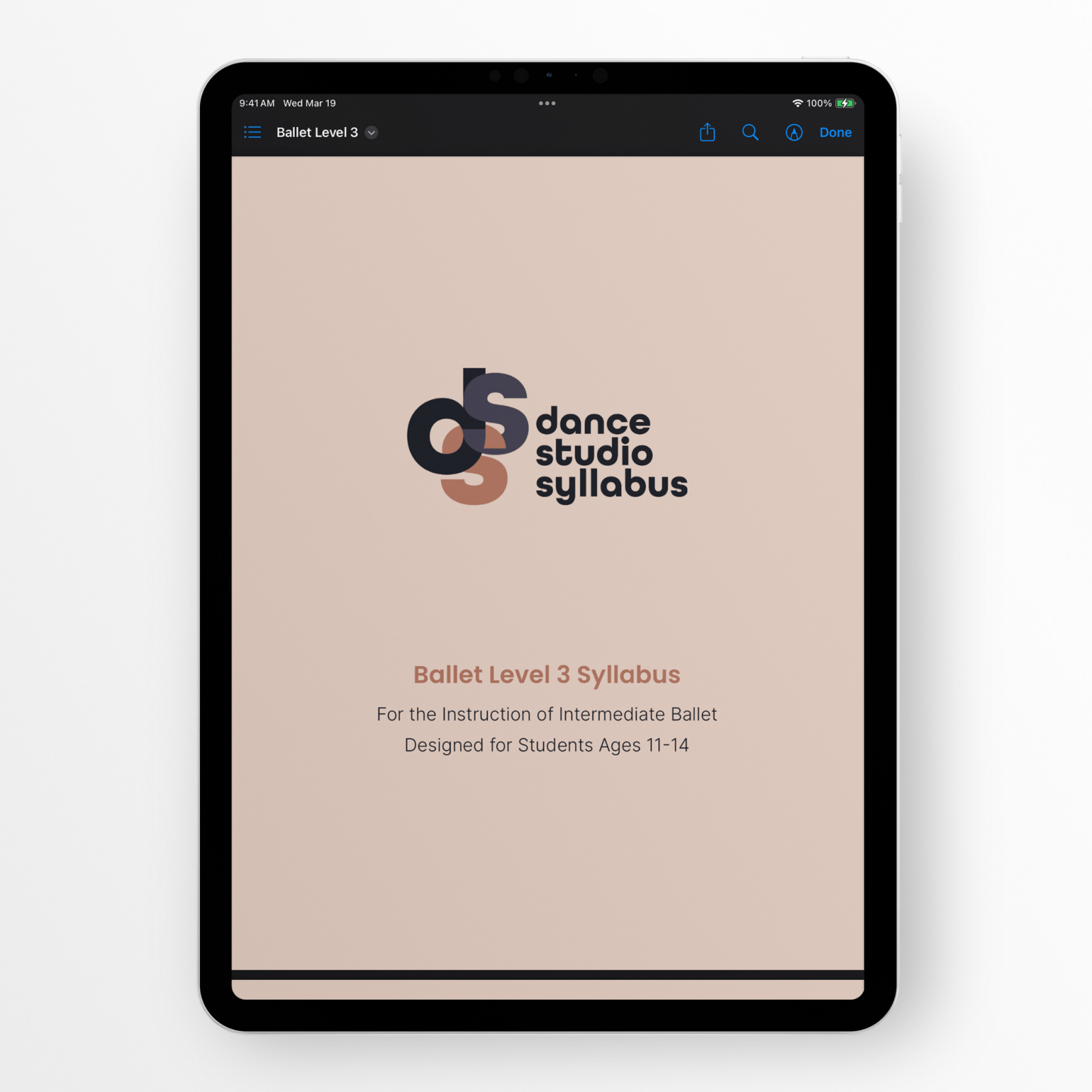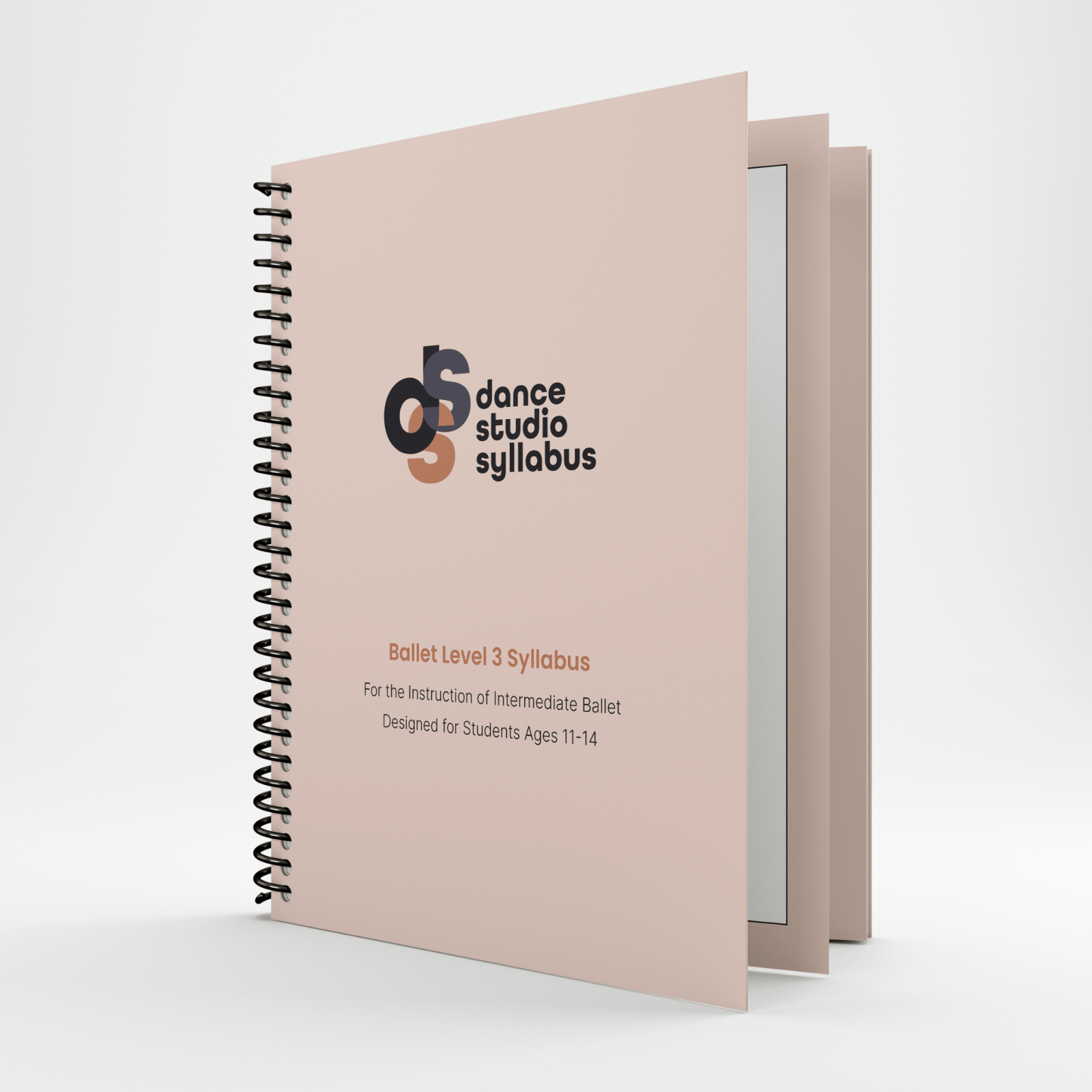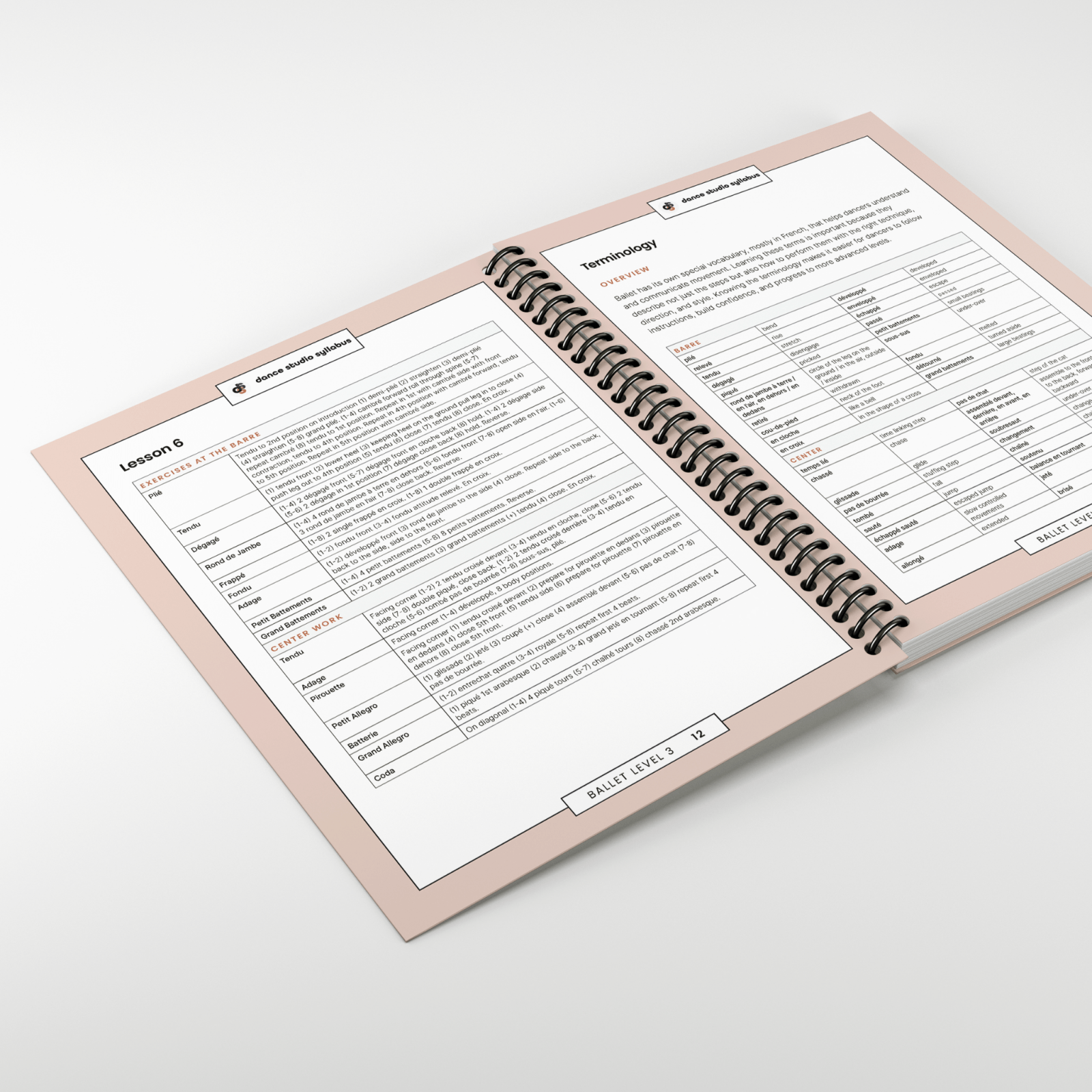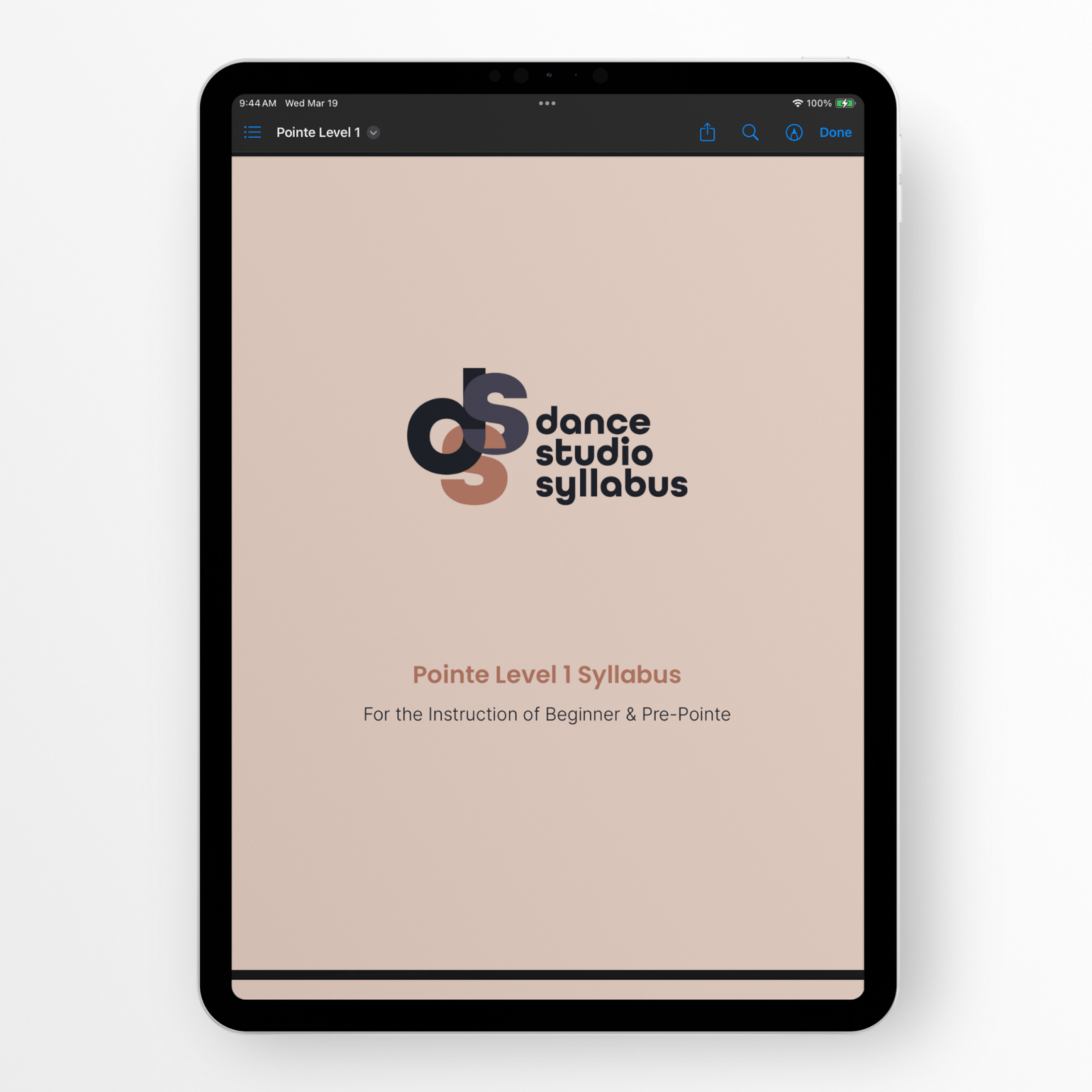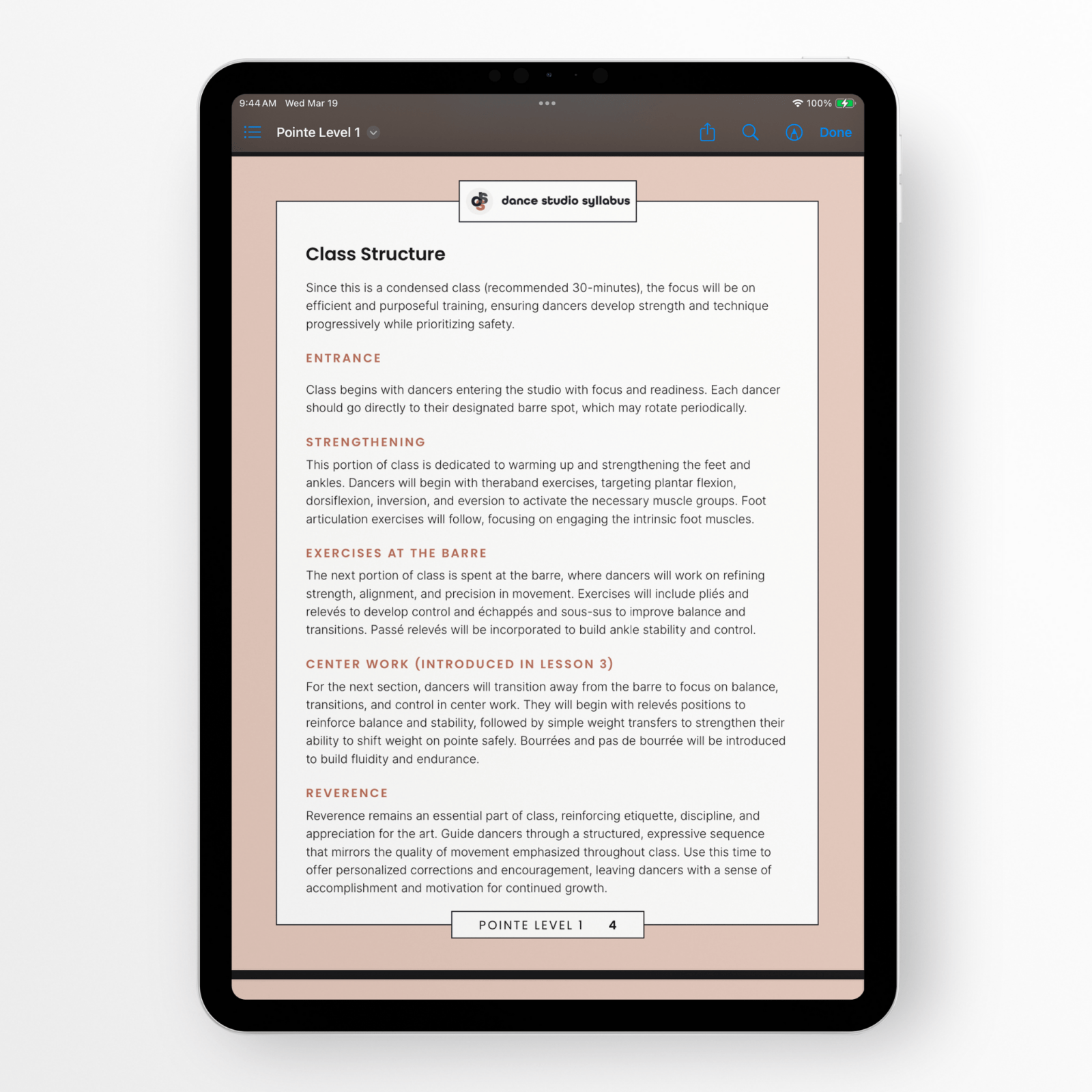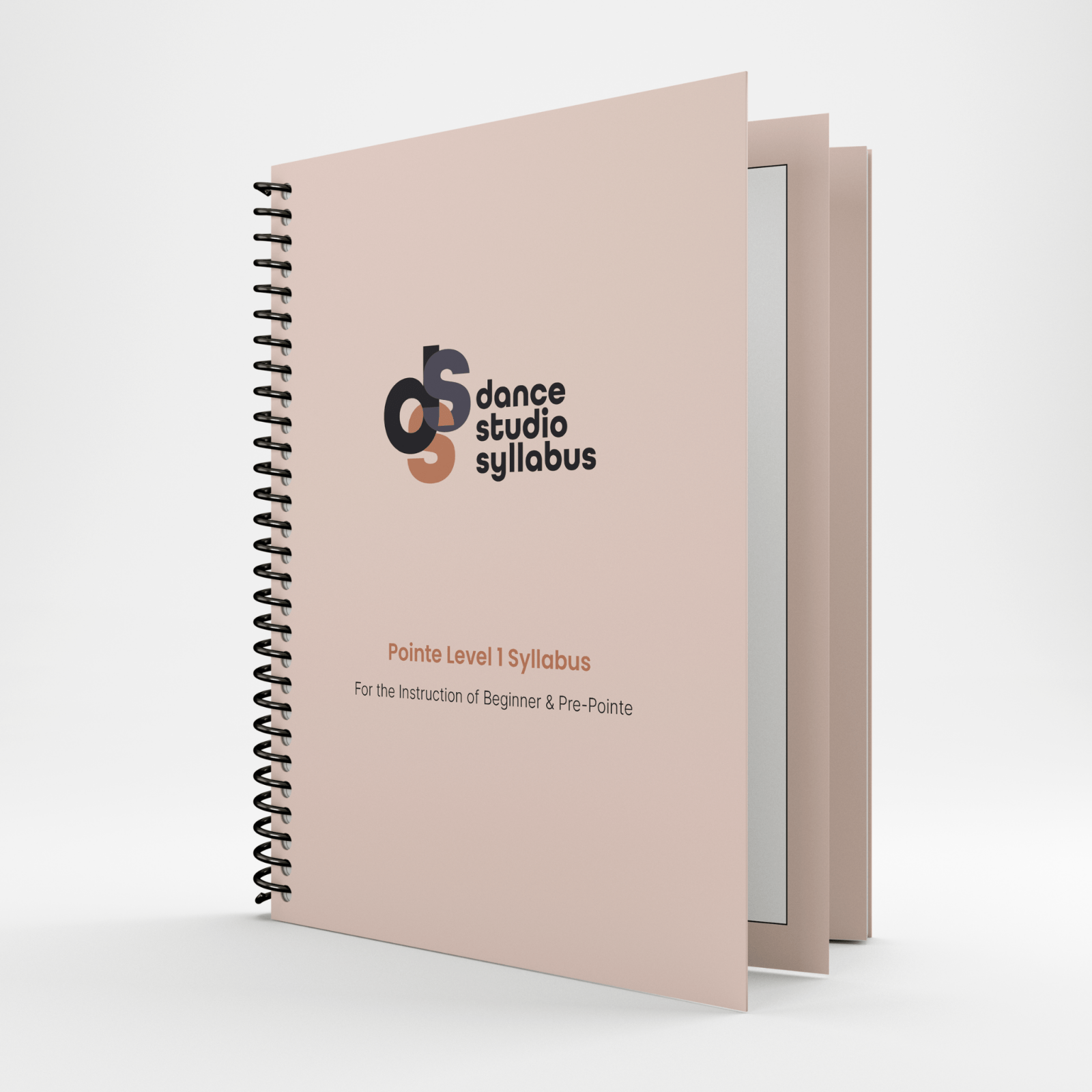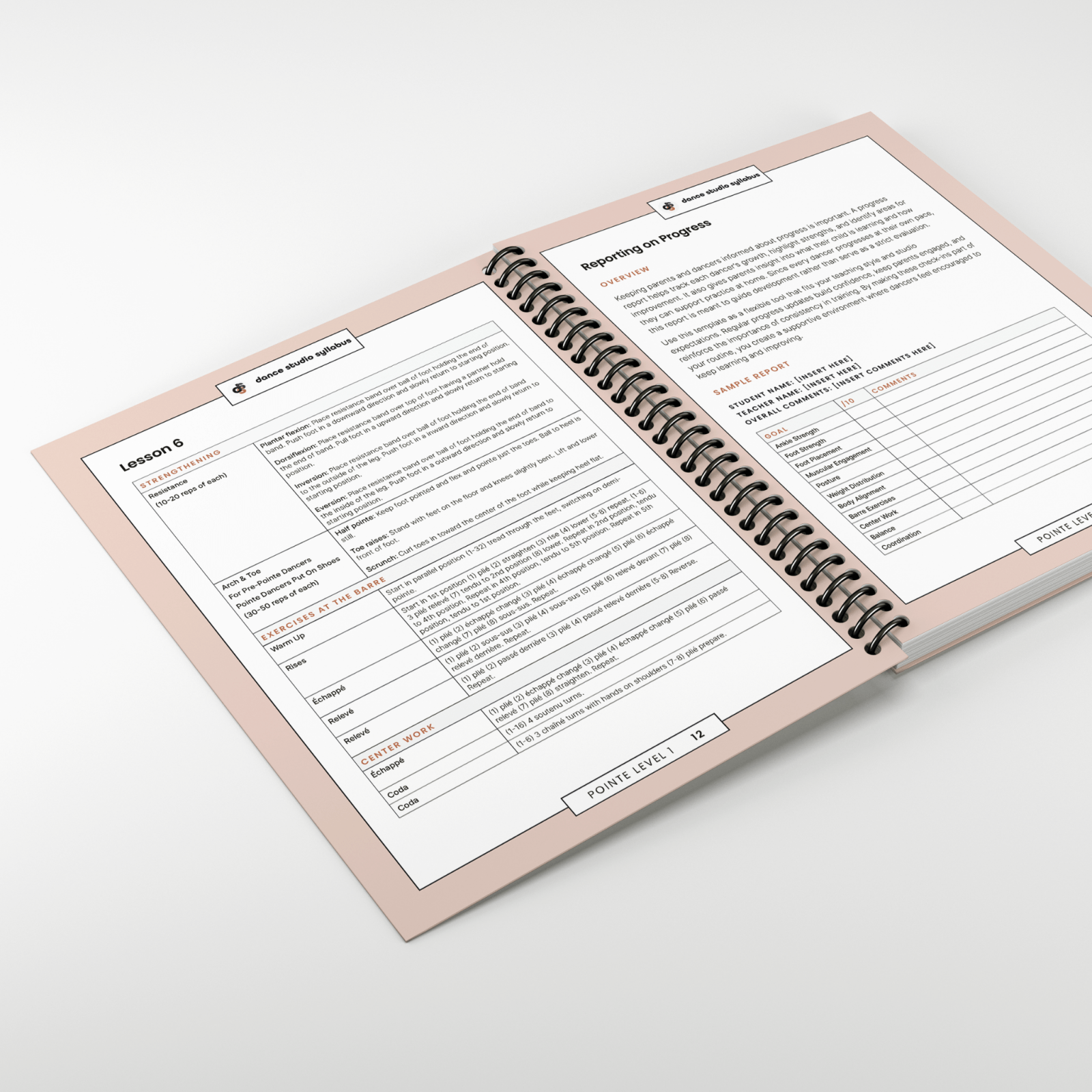In the world of dance education, not all lesson plans are created equal. Whether you’re teaching preschoolers in a creative movement class, guiding middle school students through choreography in a school gym, or refining advanced ballet technique in a pre-professional studio, the structure of your lessons matters.
The difference between a reactive and proactive classroom often comes down to one thing: intentional dance lesson plans. These aren’t just warm-up lists or class outlines. They’re purposeful guides that align with long-term goals, honor developmental stages, and empower both teacher and student with clarity.
But it's not just about one class.
A strong dance lesson plan is part of something larger: a syllabus that maps out an entire level of a genre, which fits into a broader curriculum designed to ensure dancers progress across months and years with structure and purpose.
Not sure how curriculum, syllabi, and lesson plans connect? This blog post breaks it down.
Let’s explore eight qualities you’ll consistently find in well-designed dance lesson plans, no matter the setting, age group, or style.
1. Clear Learning Objectives
The most effective lesson plans are grounded in a broader curriculum and tied directly to syllabus goals. These objectives provide direction not just for one class, but for long-term growth, helping dancers achieve age- and level-specific milestones.
Whether you're working with elementary students or high school dancers, setting clear expectations supports confidence and motivation. It also gives instructors a roadmap for consistent, intentional instruction.
2. Progressive Skill Development
Intentional dance lesson plans build upon previous material, reinforcing foundational skills while gradually introducing new challenges. This kind of progression isn’t just effective–it’s essential for safety, stamina, and long-term dancer development.
This structured growth applies to all genres, whether layering on tap footwork, hip hop isolations, ballet positions, or jazz turns. Dancers build strength and clarity, and teachers ensure each lesson contributes to a cohesive path forward.
3. Age-Appropriate Content
Effective plans are rooted in an understanding of child and adolescent development. Dancers might want to try advanced choreography, but their bodies, coordination, and focus need time to develop. Age-appropriate lesson content safeguards students while laying a strong foundation for future advancement.
This is true for preschoolers learning creative expression, elementary dancers exploring spatial awareness, or teens refining performance quality. Intentionally matching movement to developmental readiness is key to sustainable growth.
4. Built-In Repetition
Repetition is essential to mastering technique and building confidence, but it must be purposeful. Great lesson plans embed repetition with clear focus areas, allowing students to revisit and refine skills without losing engagement.
For example, in our own materials, you’ll find weekly prompts that reinforce key movements through subtle variation. Dancers experience progress without burnout, and teachers stay on track toward their goals.
5. Technical and Artistic Balance
A well-structured dance lesson nurtures both technical precision and artistic voice. While students build strength, alignment, and coordination, they should also be encouraged to explore musicality, emotion, and personal expression.
This doesn’t have to wait until advanced levels. Even in beginner or creative movement classes, students can work on storytelling, dynamics, and improvisation. Integrating artistry early helps dancers feel connected to the material and express themselves authentically.
6. Thoughtful Structure and Pacing
An intentional lesson has rhythm; it moves with clarity and purpose. Students know what to expect, and the class flows naturally from start to finish. That structure helps dancers stay focused and secure, and frees the teacher to focus on what matters: teaching.
A typical dance lesson plan might include:
- Warm-up
- Technique focus
- Across-the-floor combinations
- Creative exploration or improvisation
- Choreography or repertory
- Cool-down and reflection
This format supports both consistency and variety, essential for every age and ability. For more on class structure, check out this blog post.
7. Assessment Opportunities
You don’t need a final exam to assess progress. Strong lesson plans naturally incorporate opportunities for both formative and summative feedback. Teachers might use rubrics, skill checklists, progress trackers, or self-reflection worksheets to monitor growth and guide instruction.
Progress reports and one-on-one conferences are also helpful across all settings, from K–12 schools to competitive studios. When assessment is part of the plan, feedback becomes easier to give and more meaningful to receive.
8. Adaptability Without Compromise
When dance lesson plans are built for the long term, flexibility becomes easier. Whether you need to adjust for a sub, shift based on class energy, or revise a pacing issue, intentional plans allow you to adapt without sacrificing growth.
This is what separates good teachers from great ones: the ability to pivot with purpose, while still guiding dancers toward clearly defined outcomes.
Why This Matters
Intentional dance lesson plans create structure, support progress, and reduce burnout, for both dancers and teachers. They’re relevant across all ages and settings, from elementary classrooms to adult community programs, and adaptable across styles including ballet, jazz, modern, hip hop, and more.
They also connect to a larger ecosystem of standards, curriculum design, and performance goals, helping educators deliver meaningful results.
Quick-Start Checklist: 8 Signs of an Intentional Lesson Plan
✅ Are learning objectives clear and tied to long-term goals?
✅ Does each lesson build logically on prior material?
✅ Is the content developmentally appropriate?
✅ Is repetition structured and purposeful?
✅ Is there a balance of technique and artistry?
✅ Does the class follow a consistent and effective flow?
✅ Are there built-in assessment tools or opportunities?
✅ Can the plan adapt while still supporting student growth?
Use this checklist to evaluate or refine your current lesson plans. If you’re missing a few boxes, consider where more structure or clarity might help your dancers thrive.
Where to Find Dance Lesson Plans and Syllabi
If you're looking to deepen your class preparation with done-for-you syllabi and accompanying lesson plans, or want to explore free resources, here are a few helpful links:
- Early Childhood Dance Syllabi & Accompanying Lesson Plans
- Beginner Dance Syllabi & Accompanying Lesson Plans
- Early Intermediate Dance Syllabi & Accompanying Lesson Plans
- Intermediate Dance Syllabi & Accompanying Lesson Plans
- Advanced Dance Syllabi & Accompanying Lesson Plans
- Free Sample Lesson Plan
Our digital and spiral-bound syllabi check all eight boxes. They're built for teachers who want structure, intentionality, and age-appropriate content, from creative movement to pointe. Each includes full-year plans, technique breakdowns, and progress tracking tools.
Because when your lesson plans are intentional, everything else falls into place.
